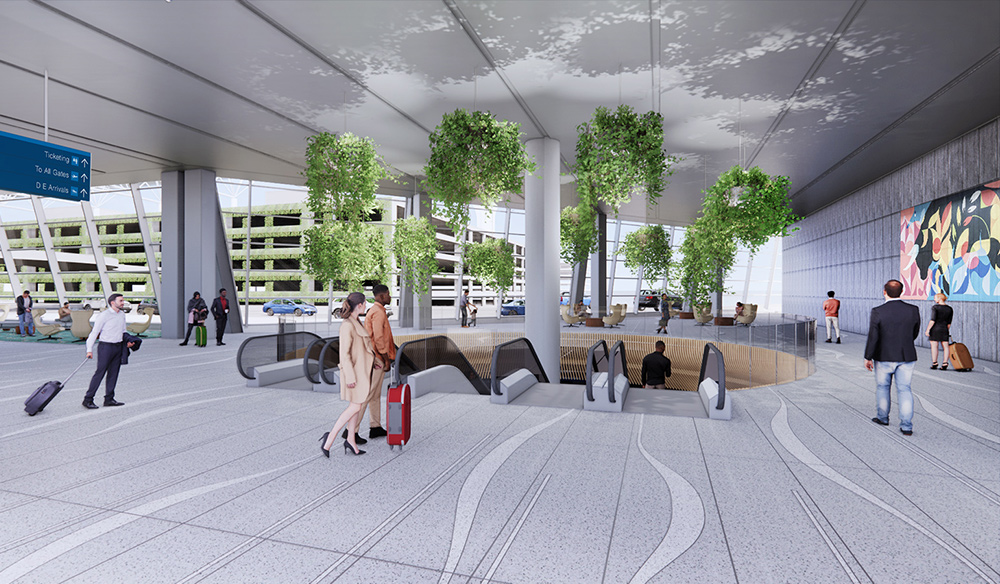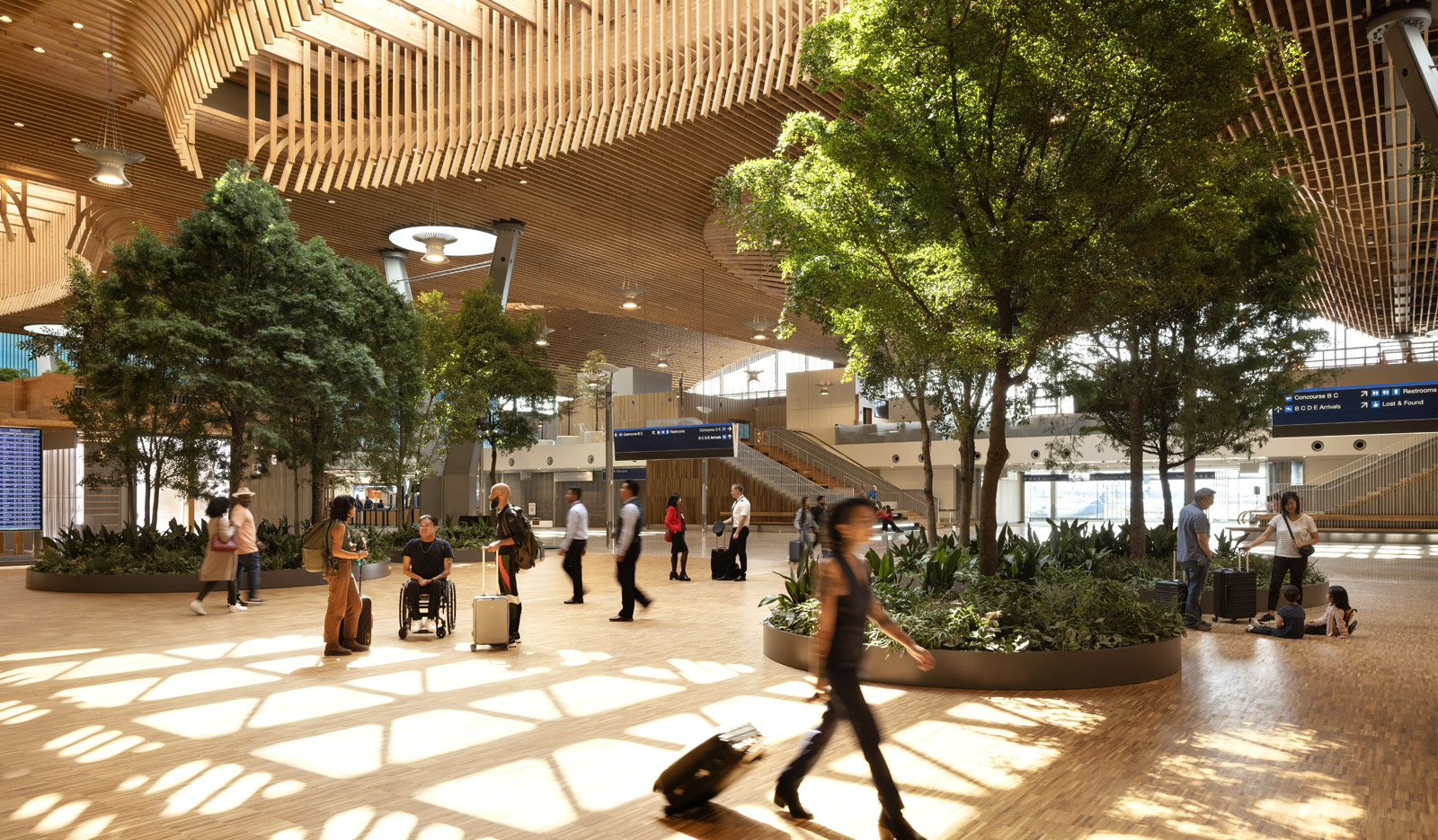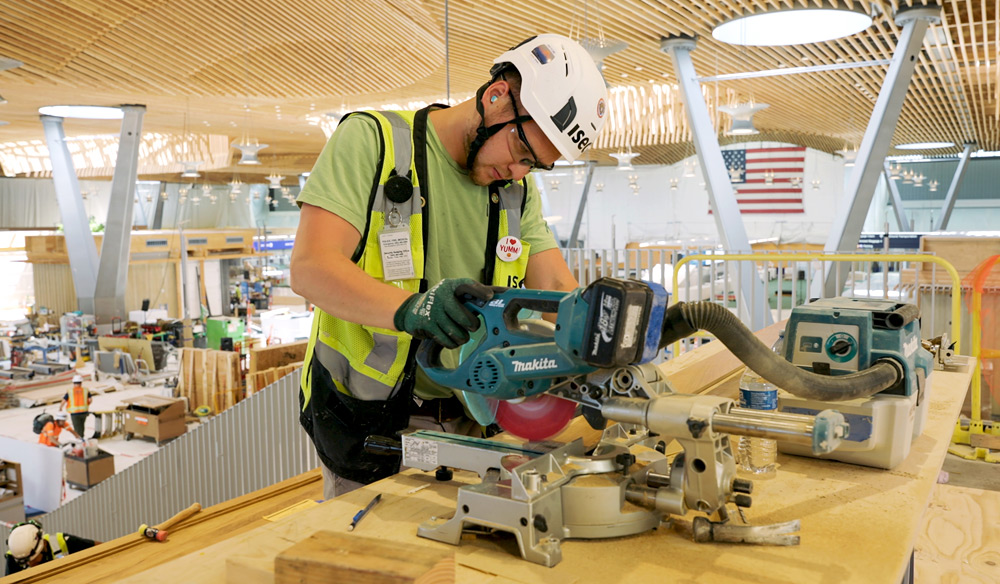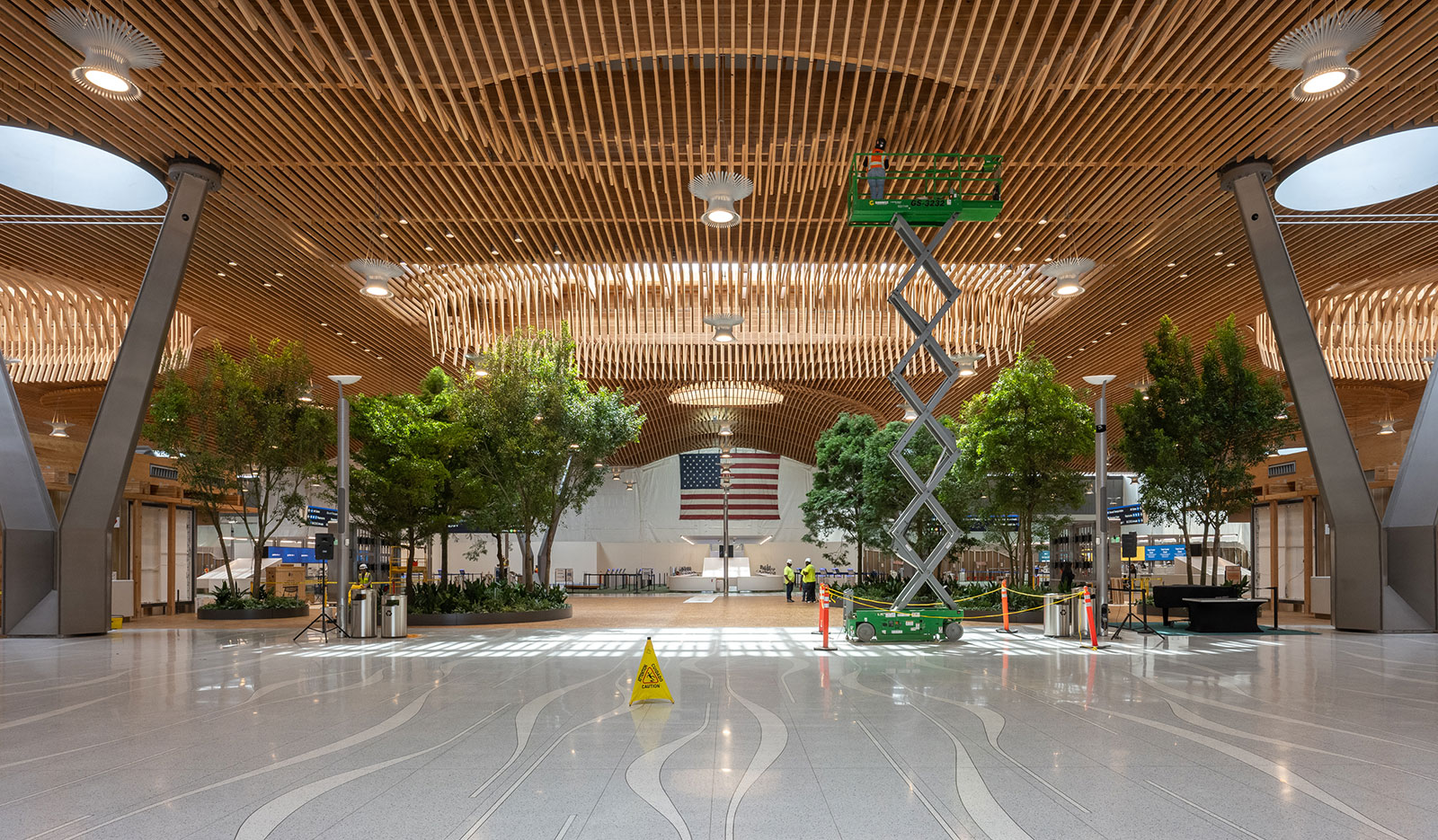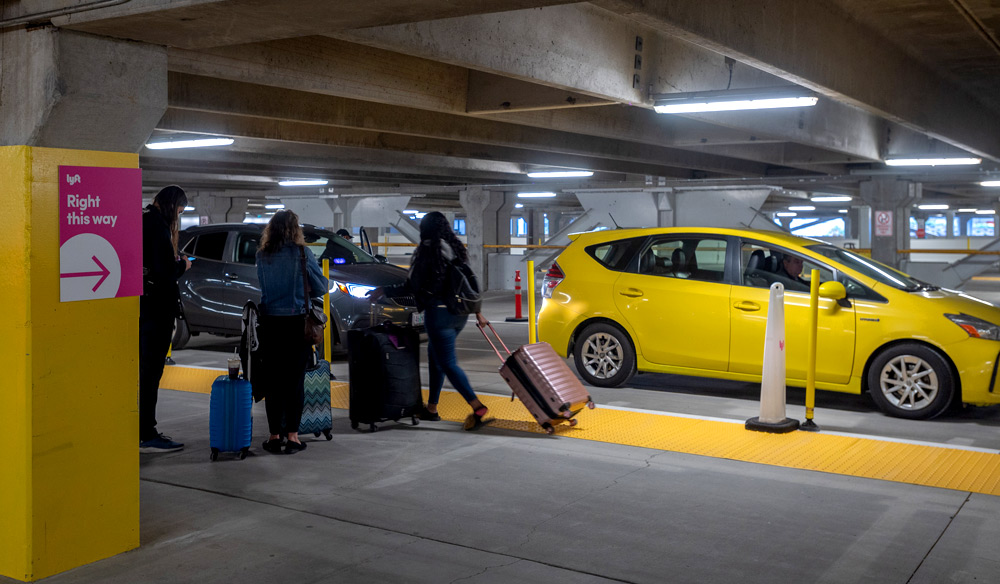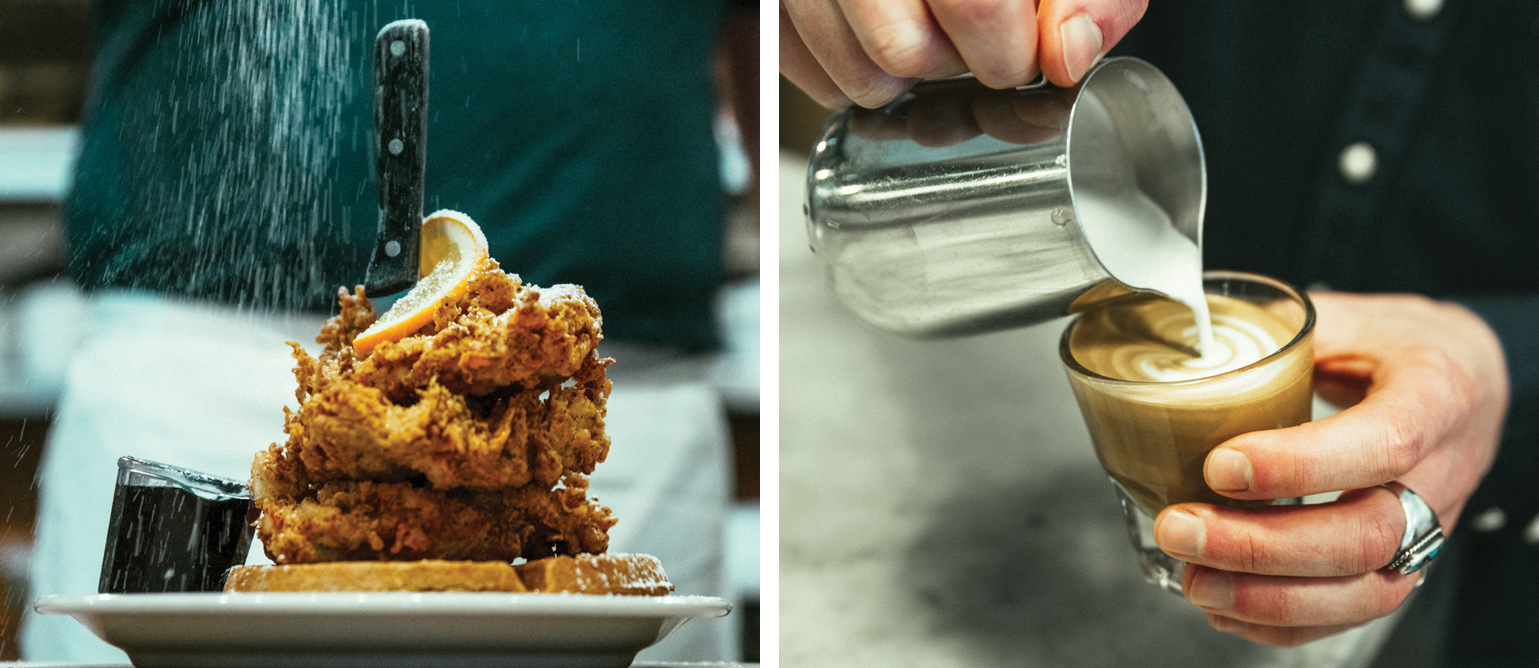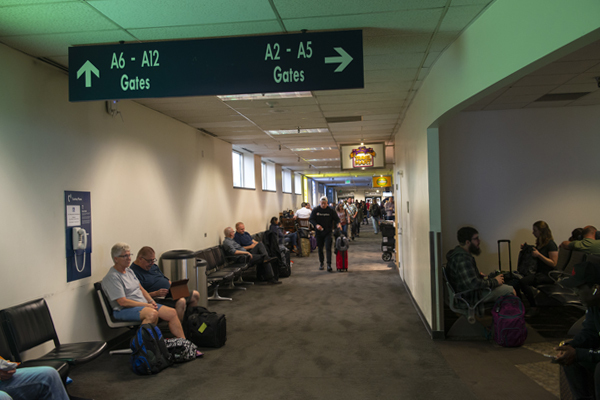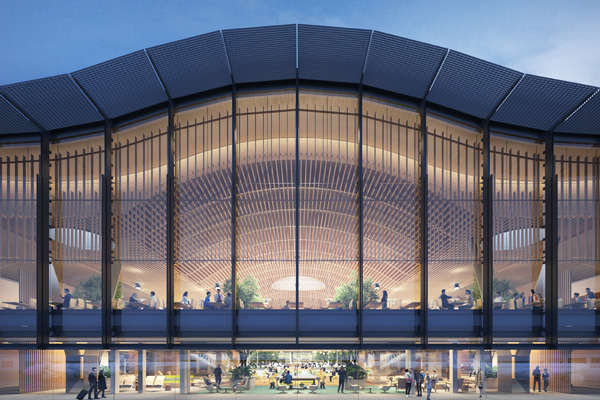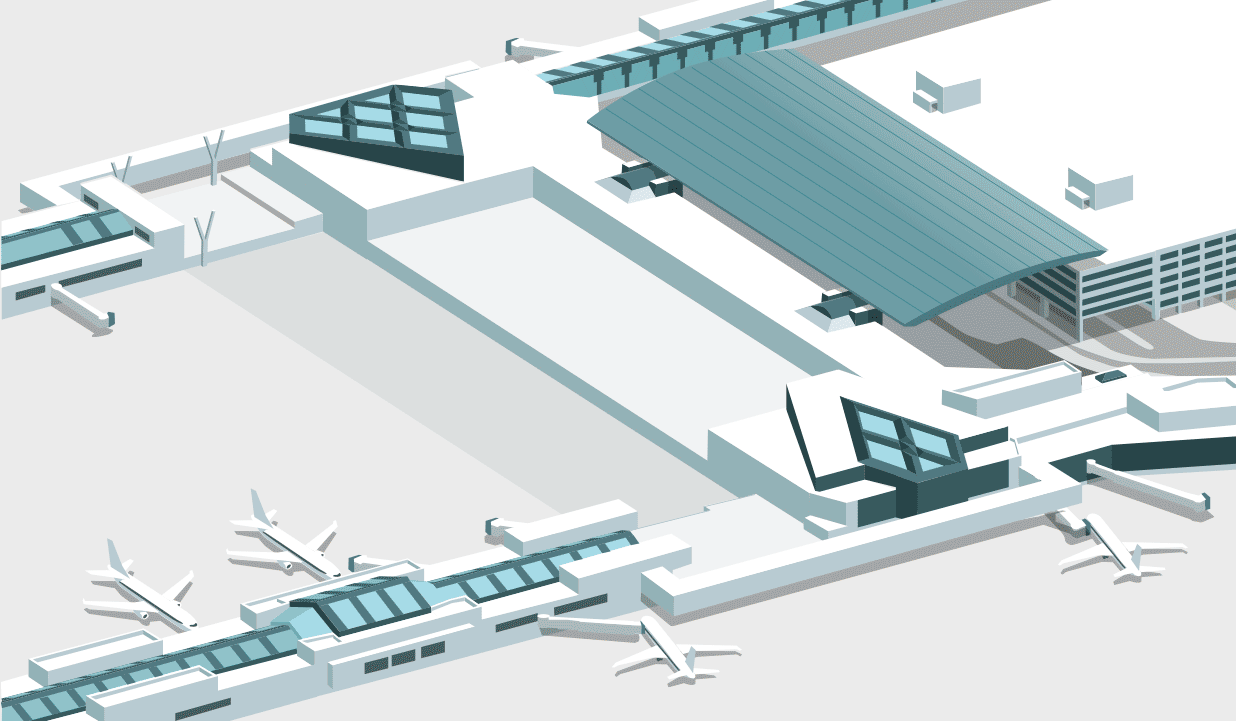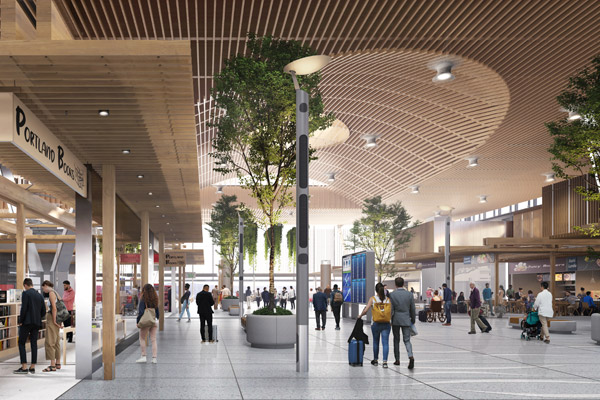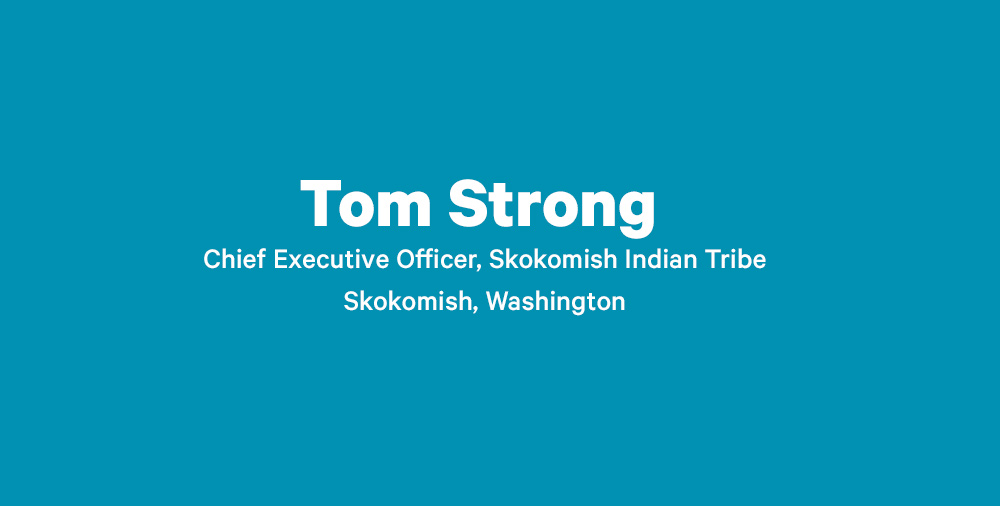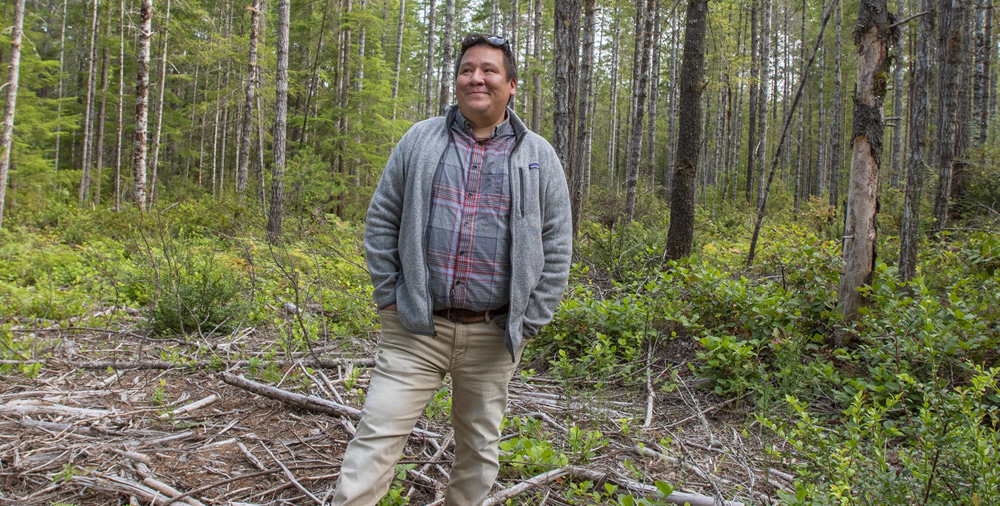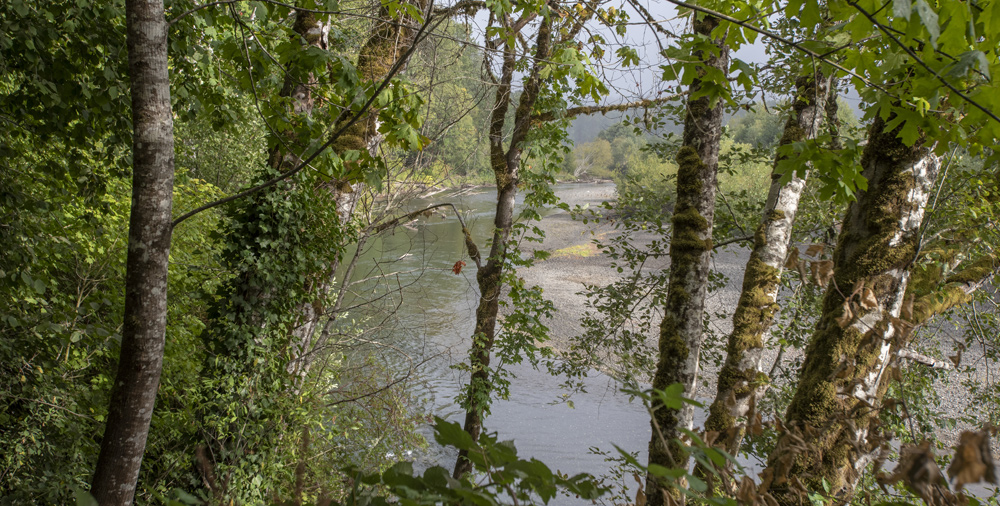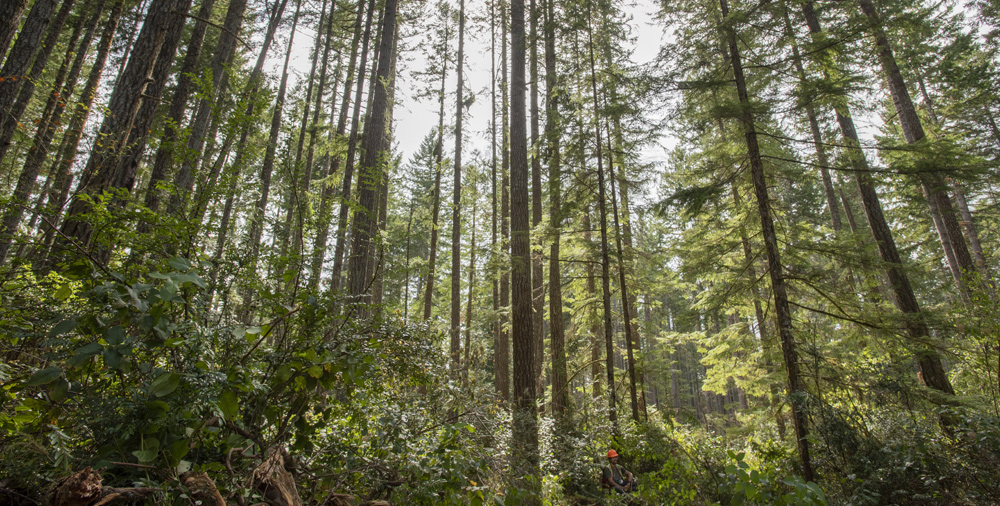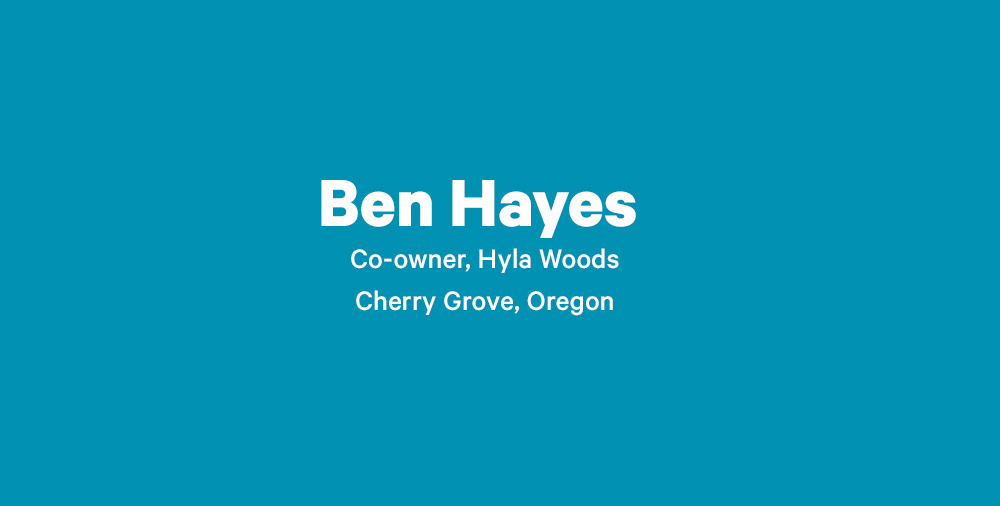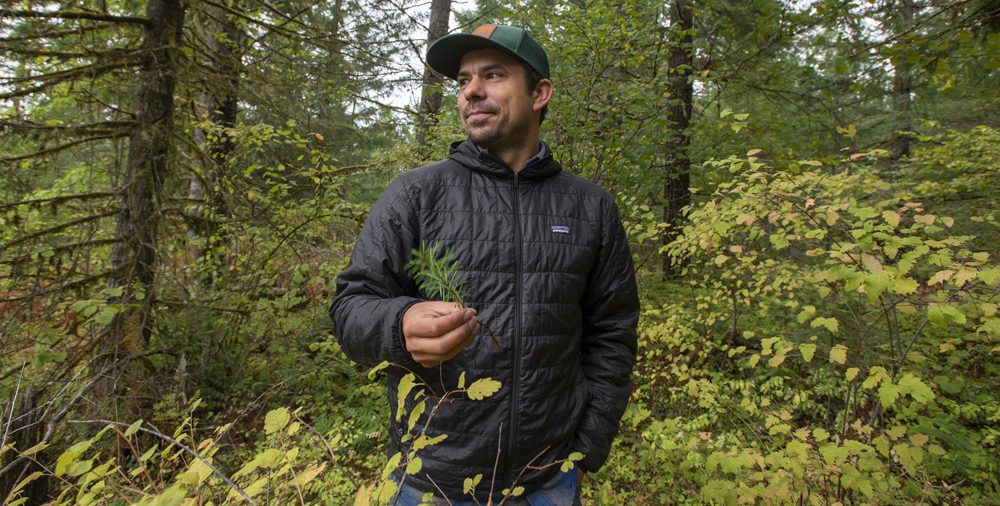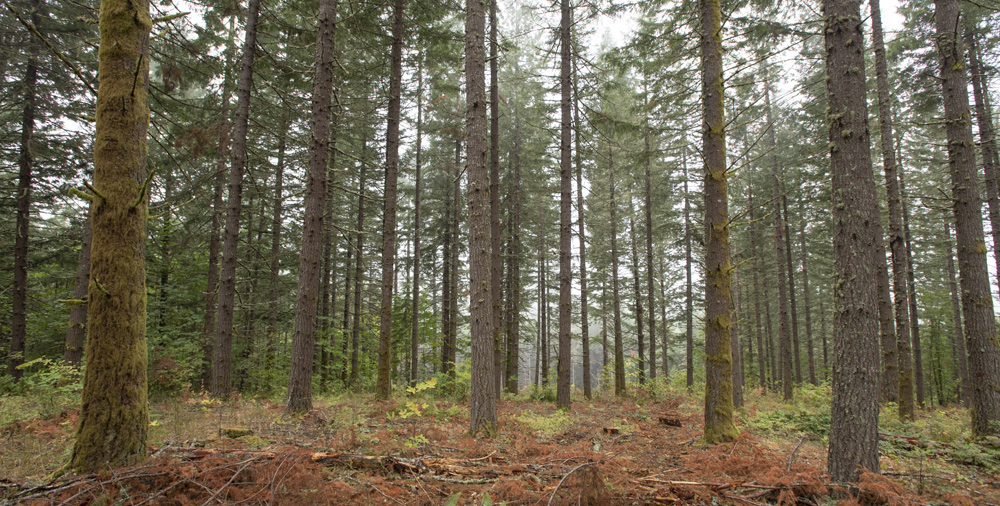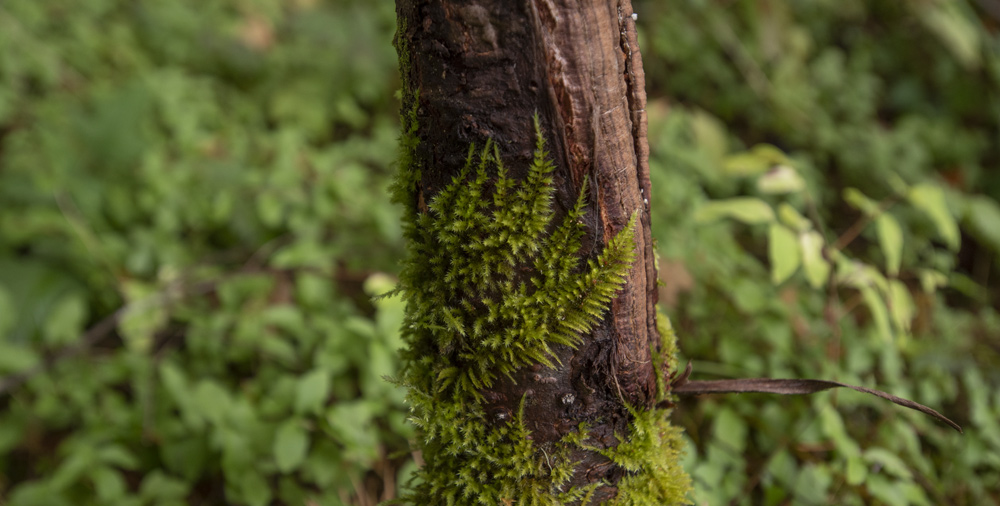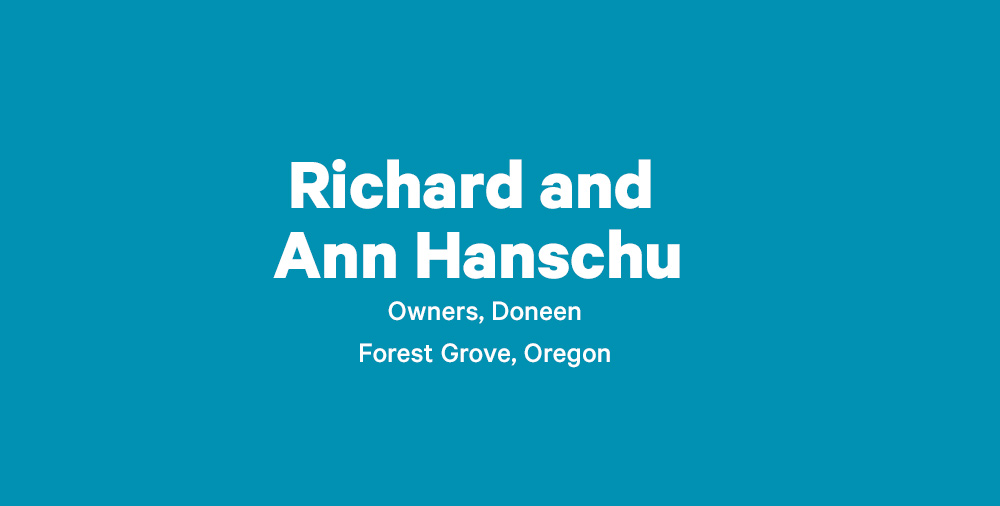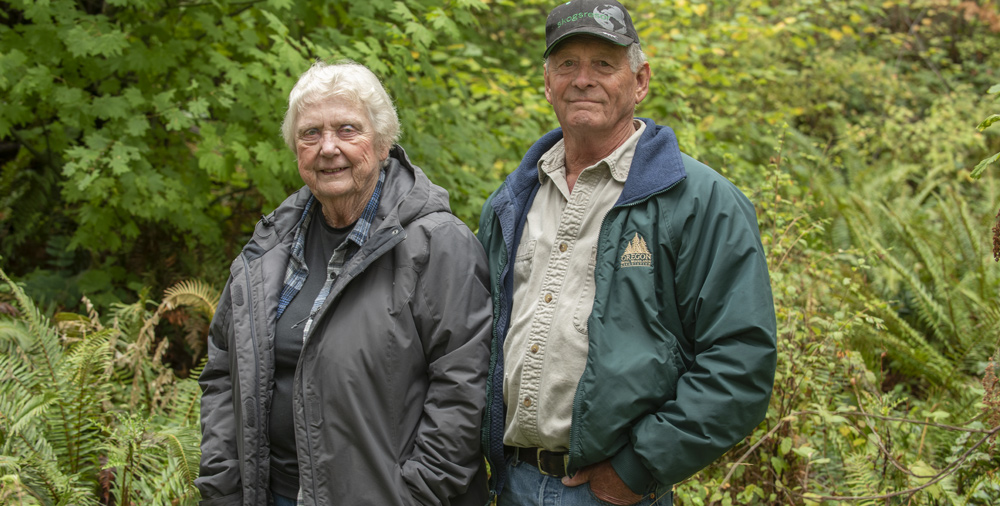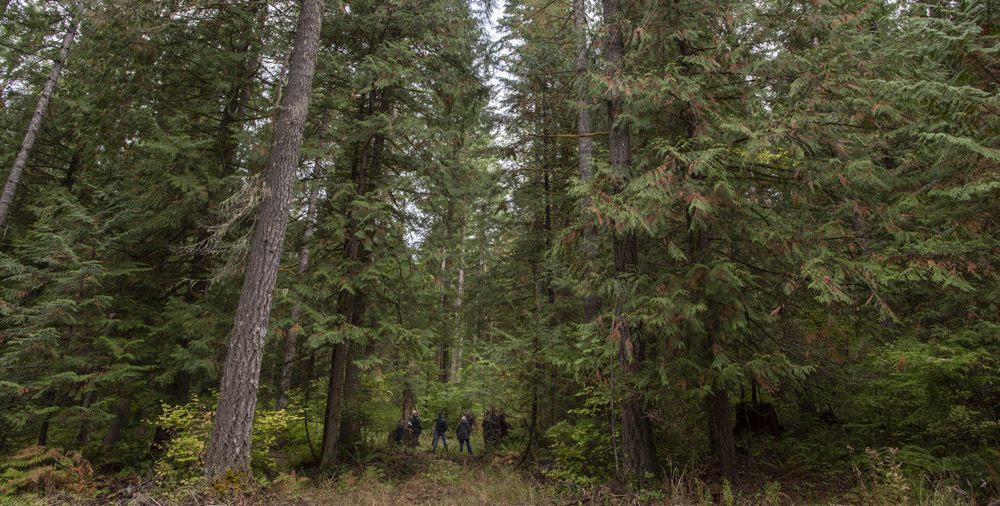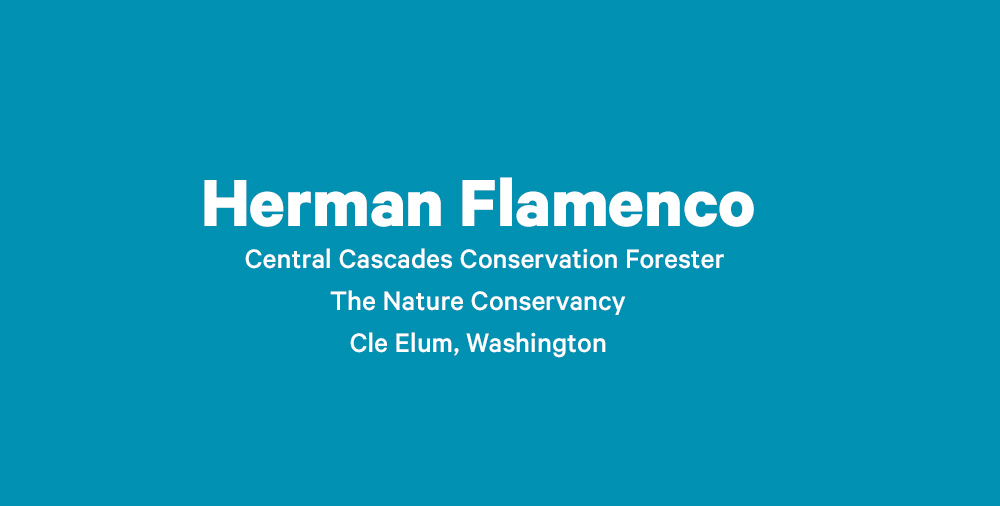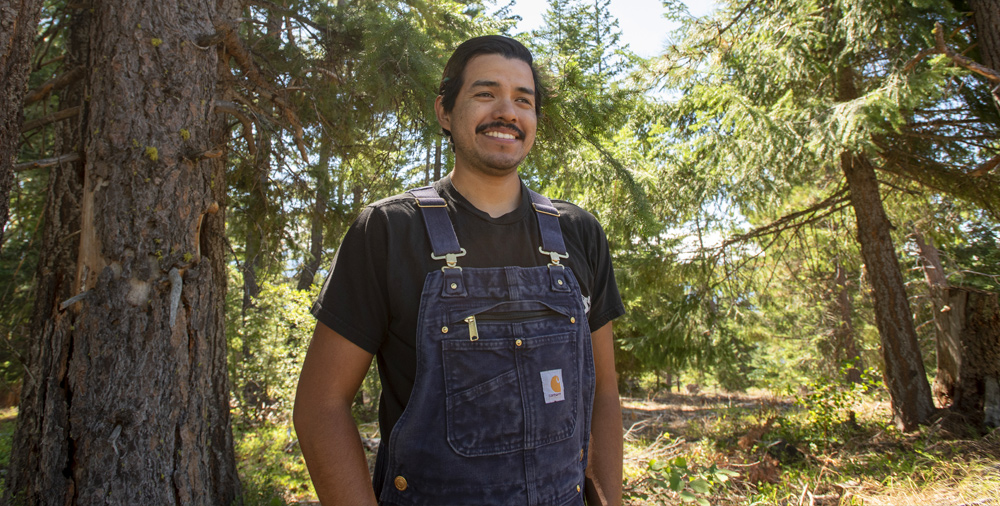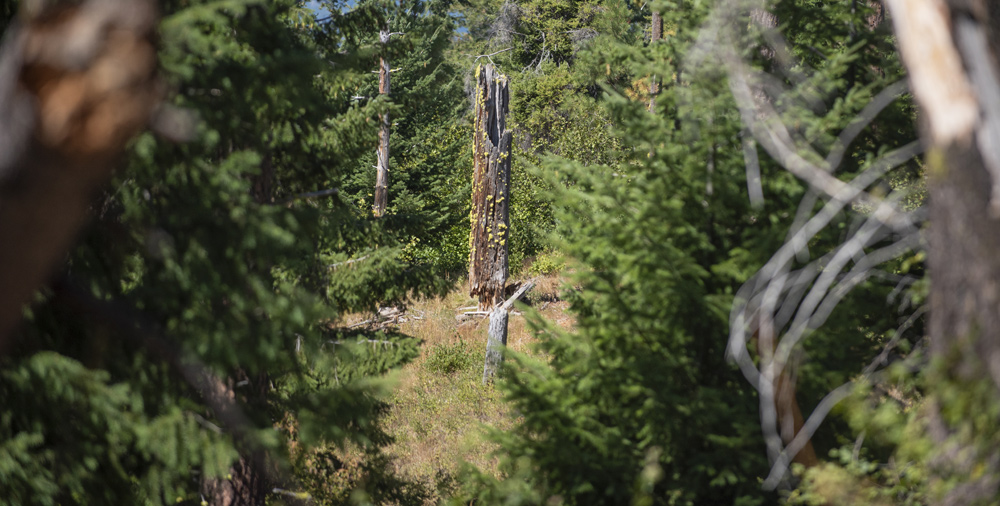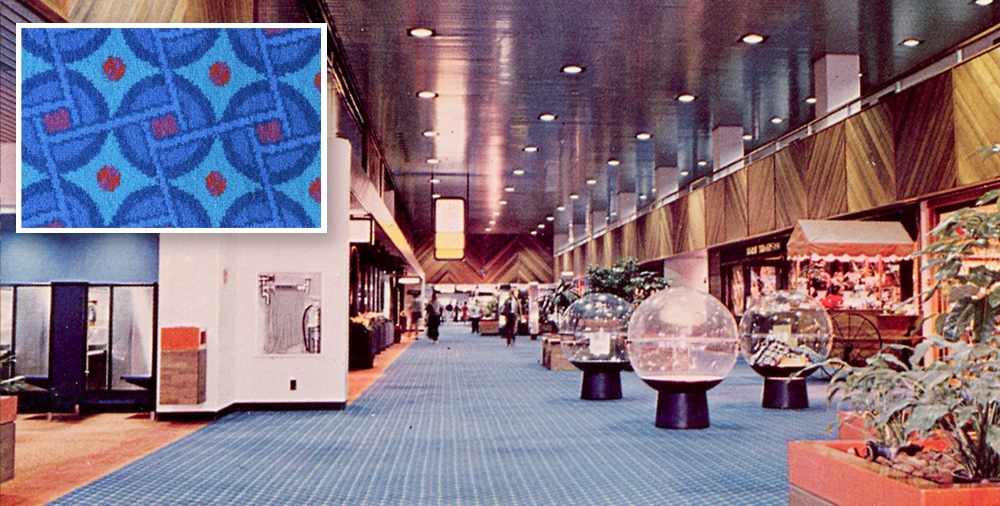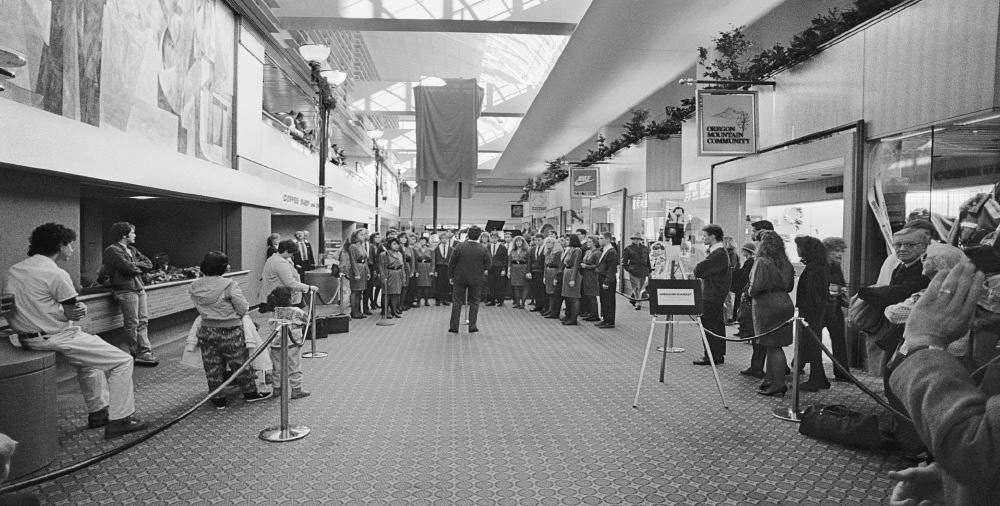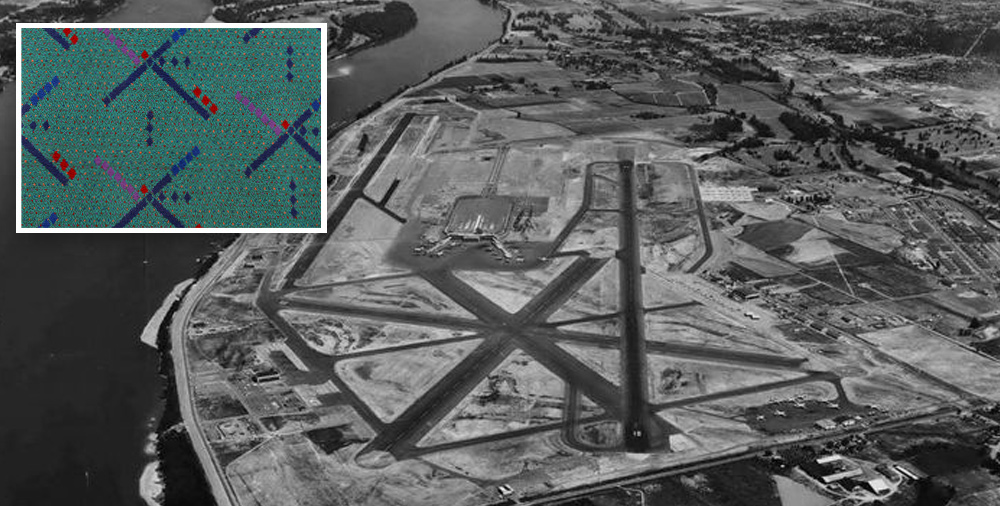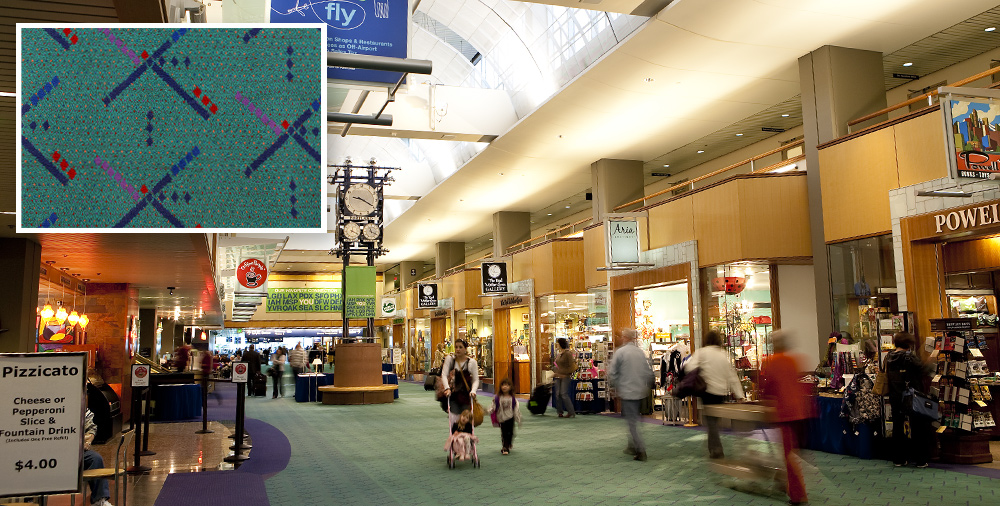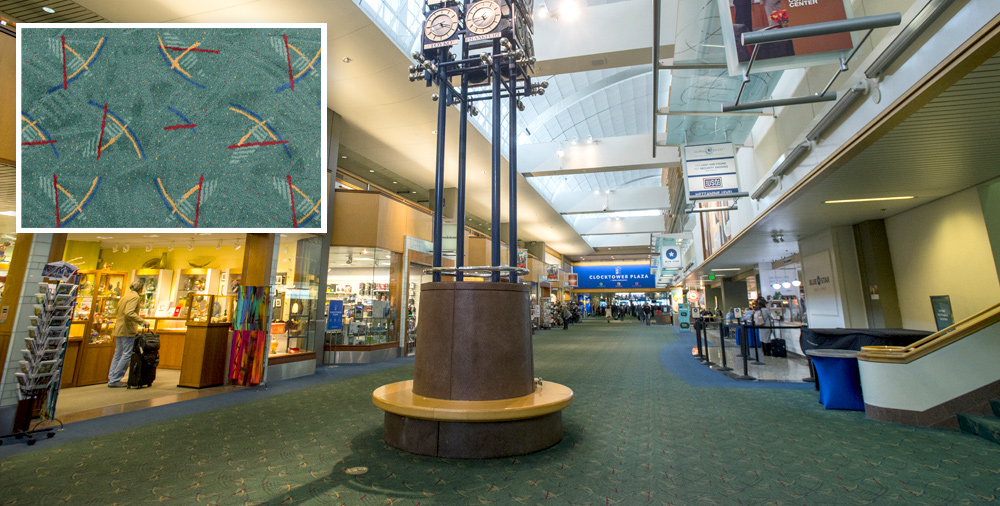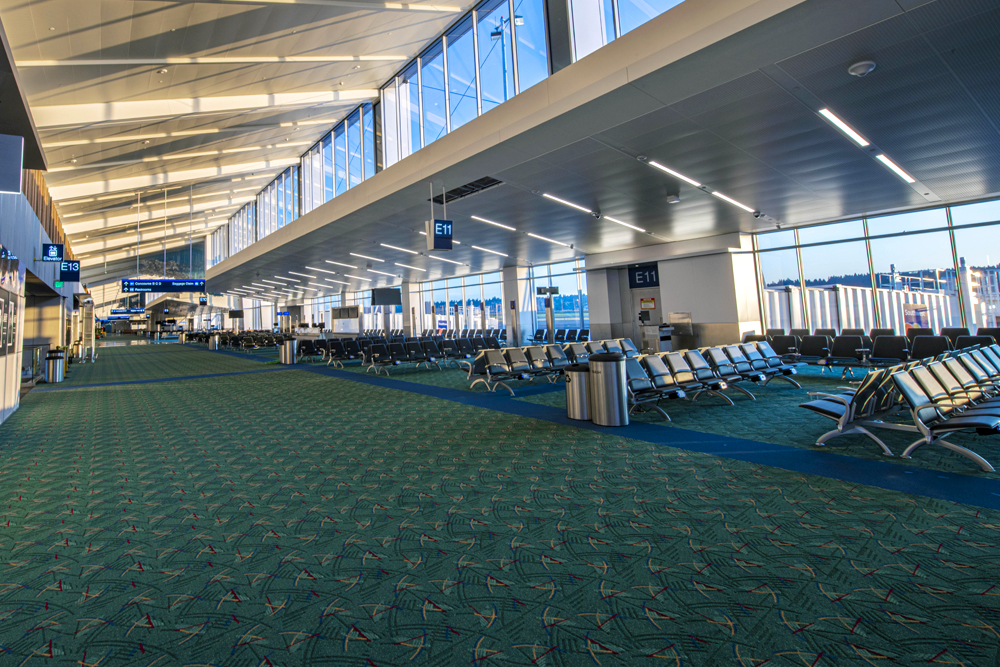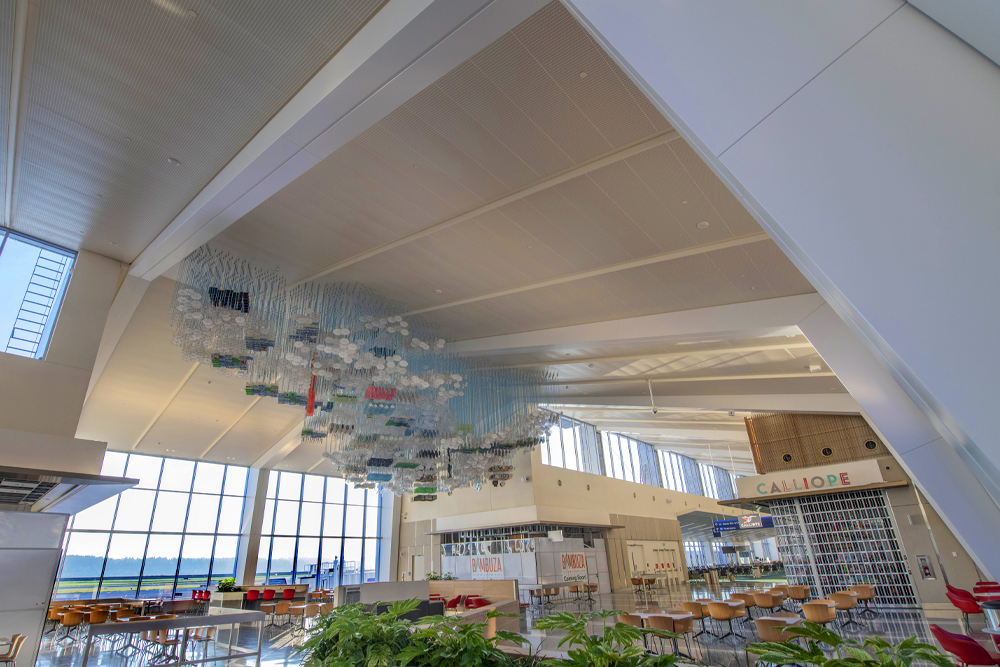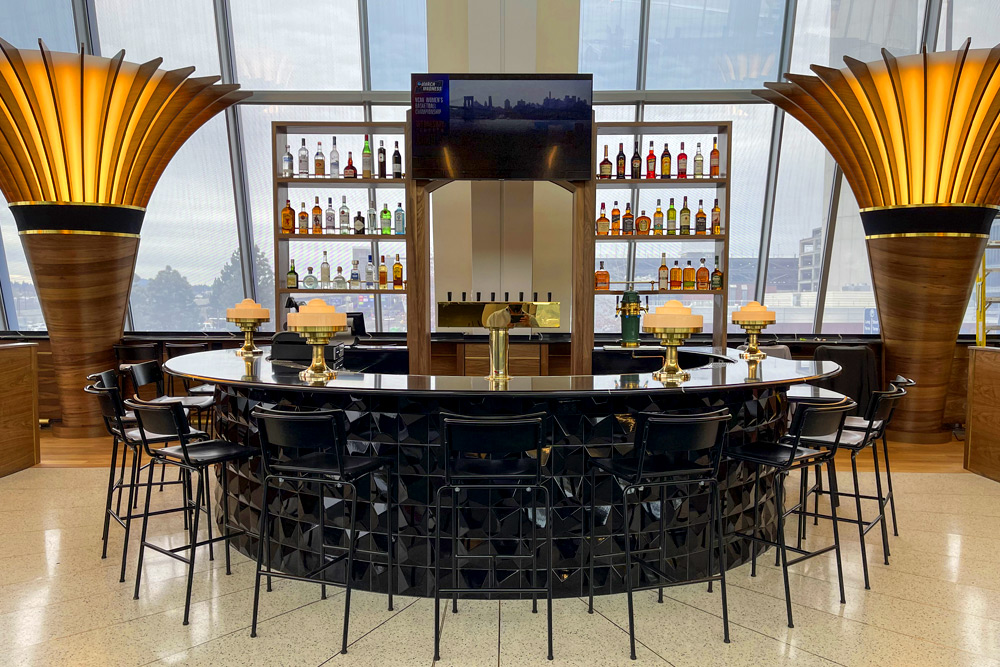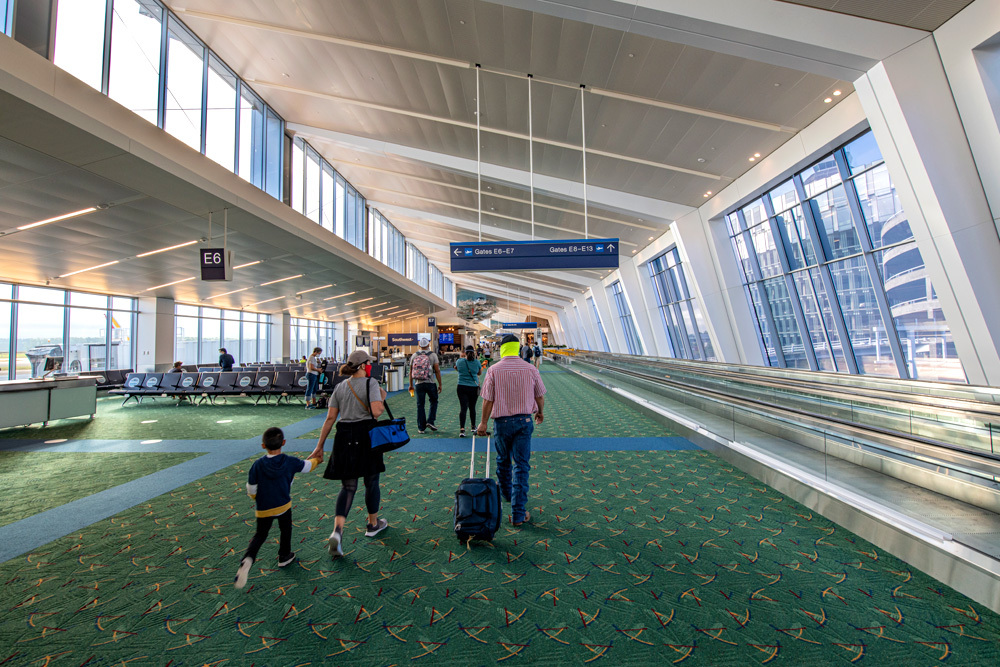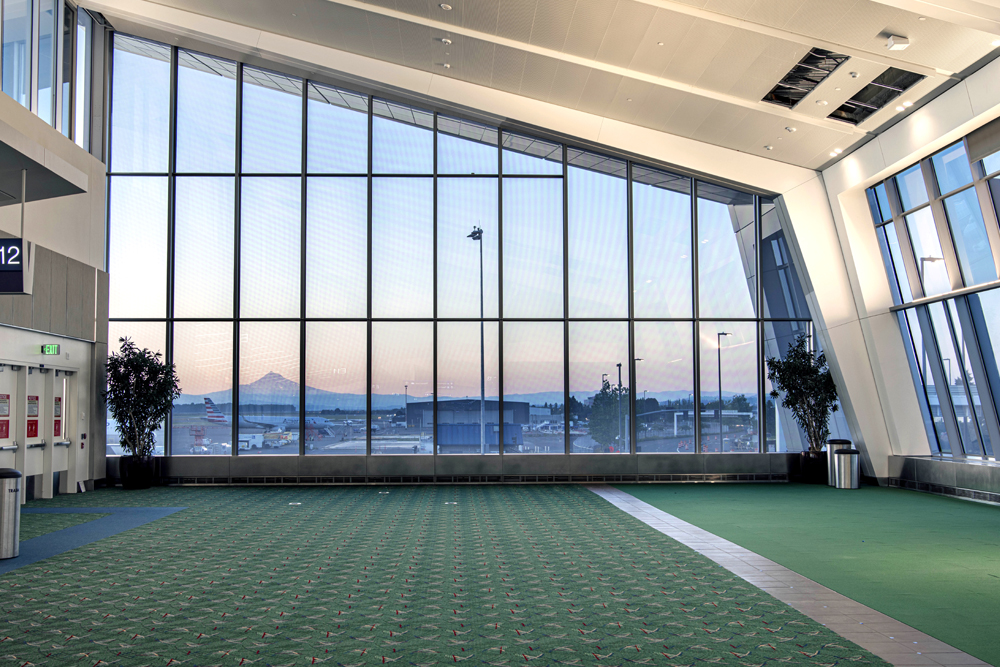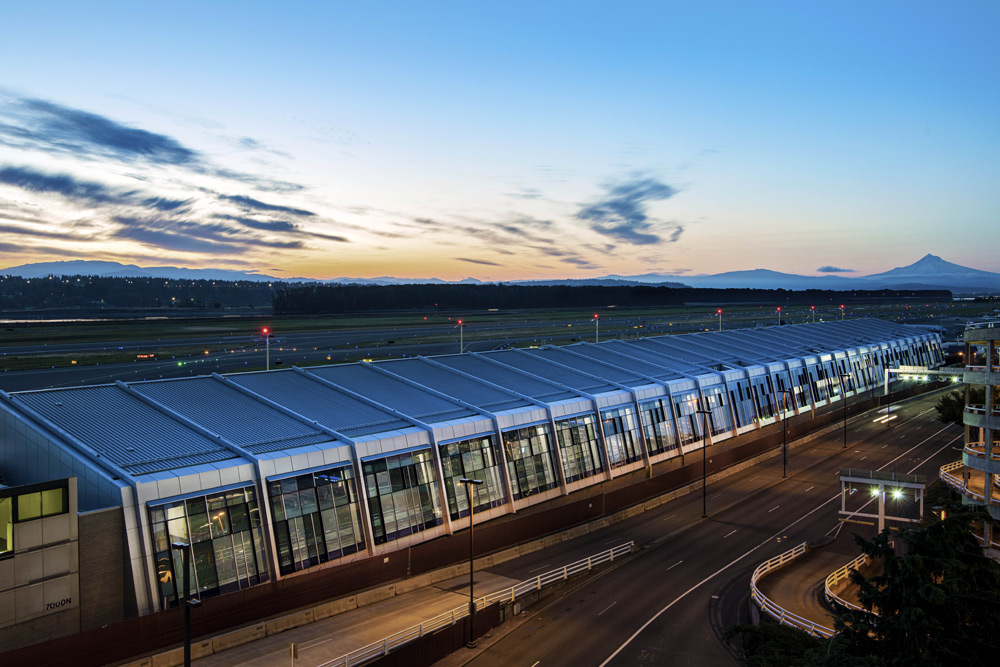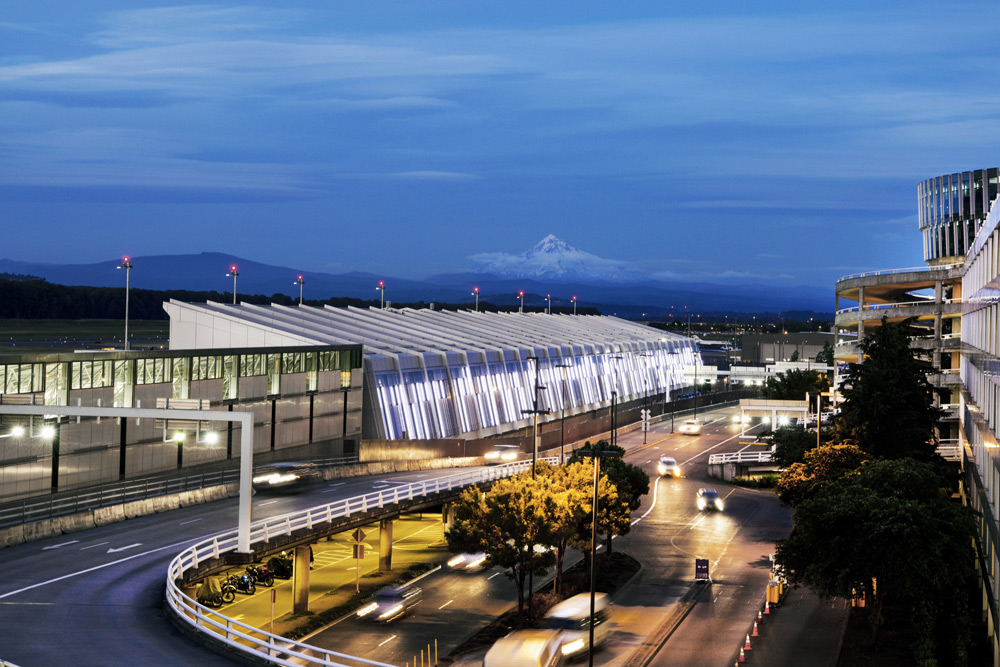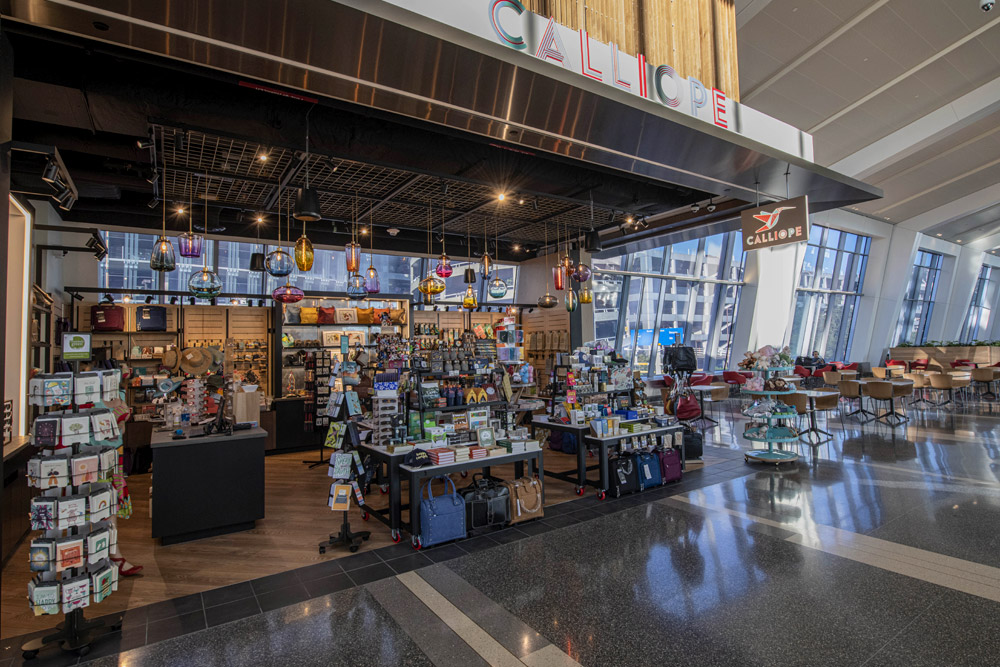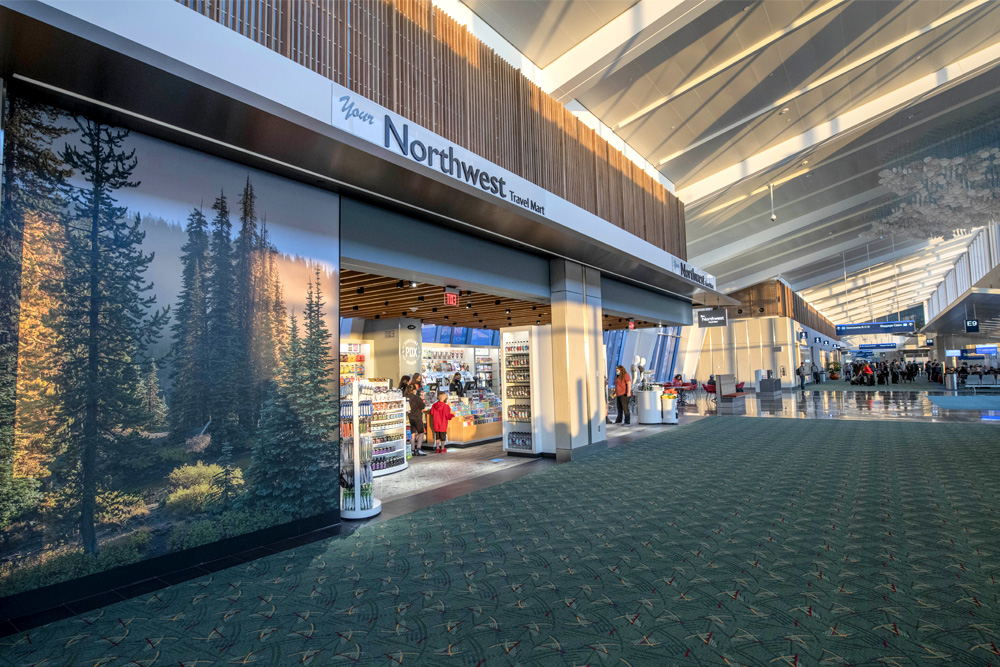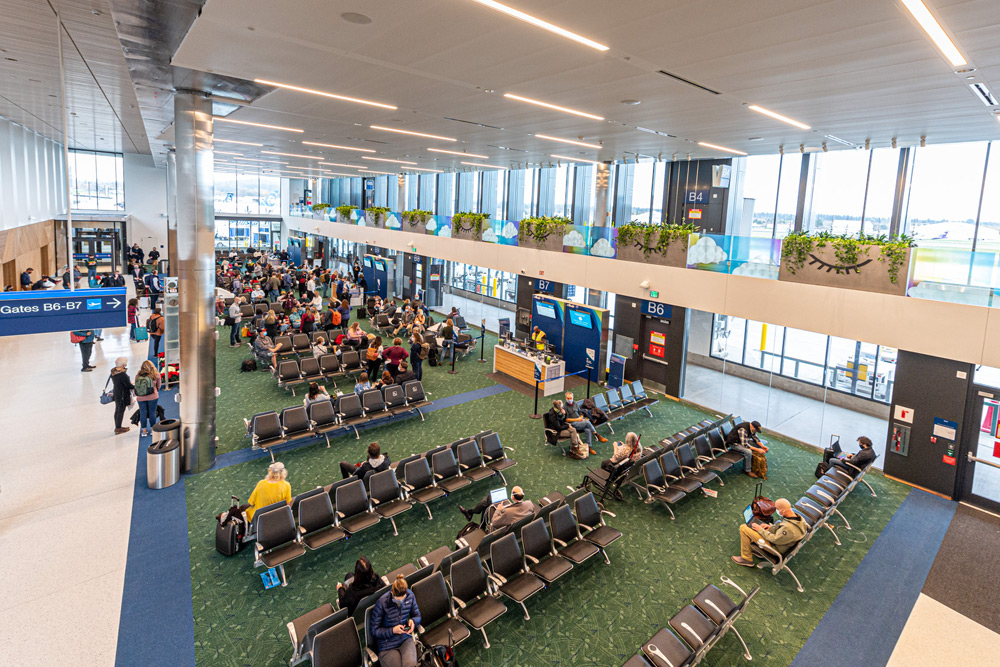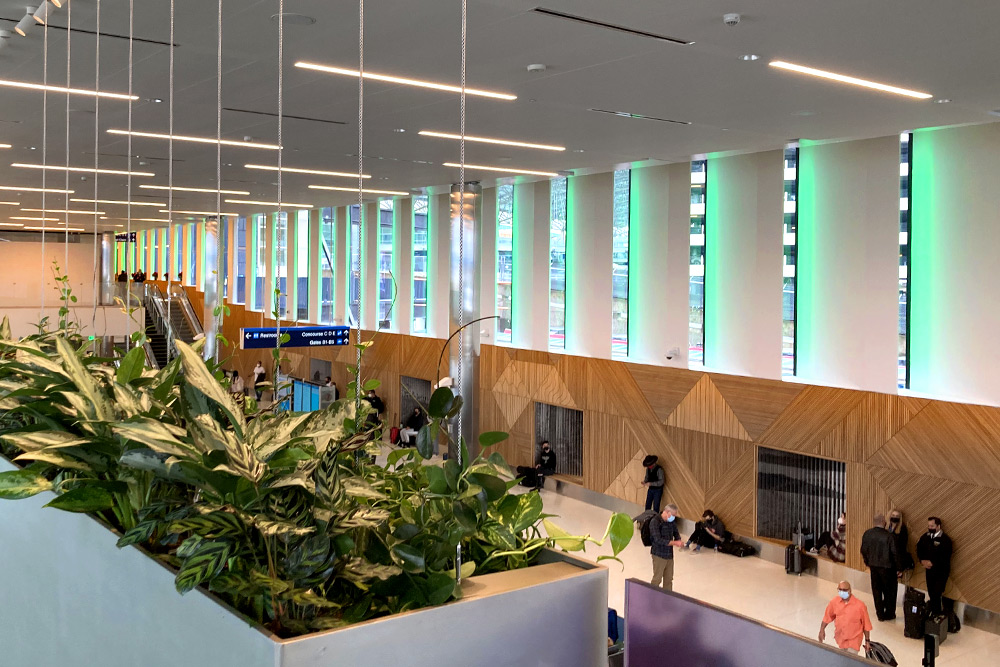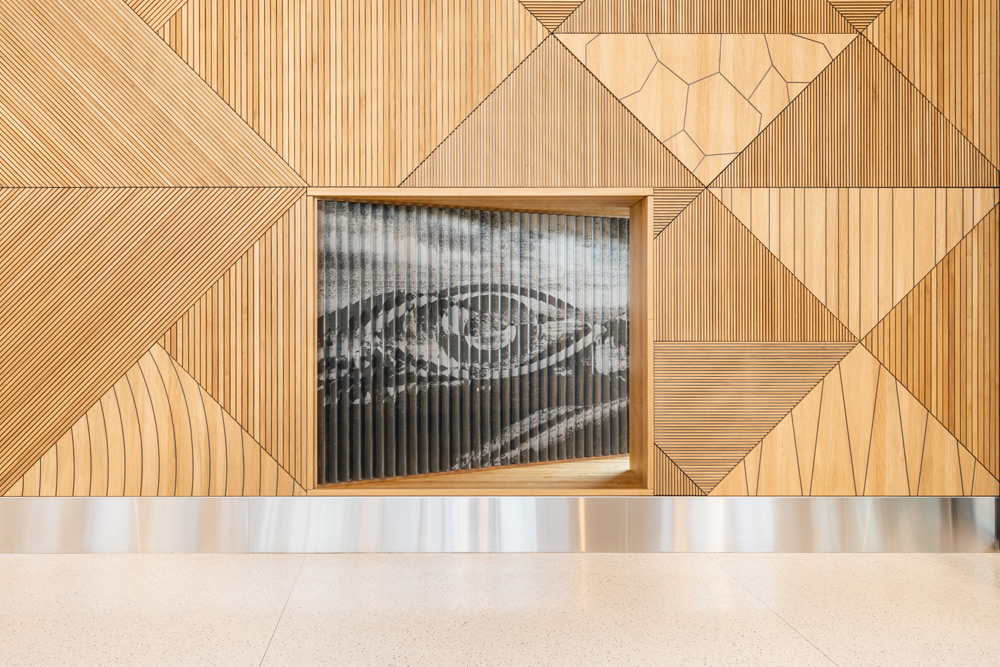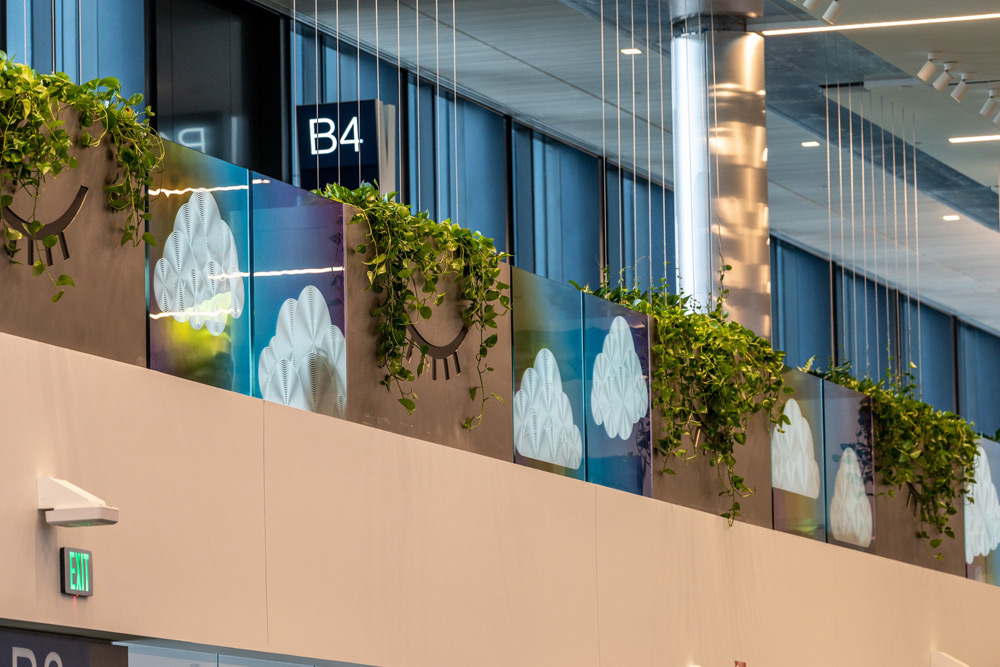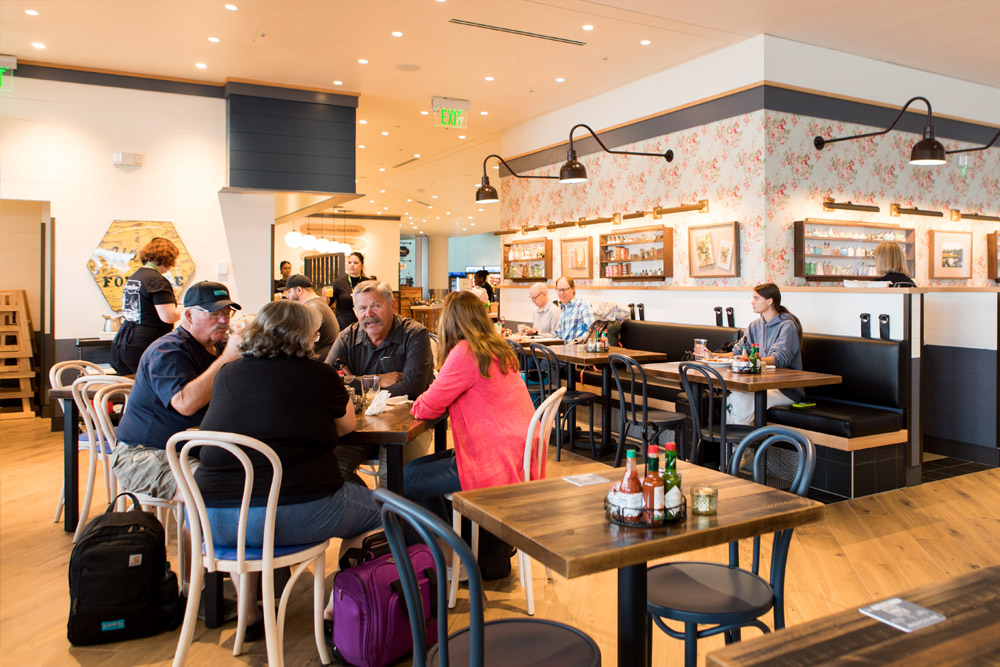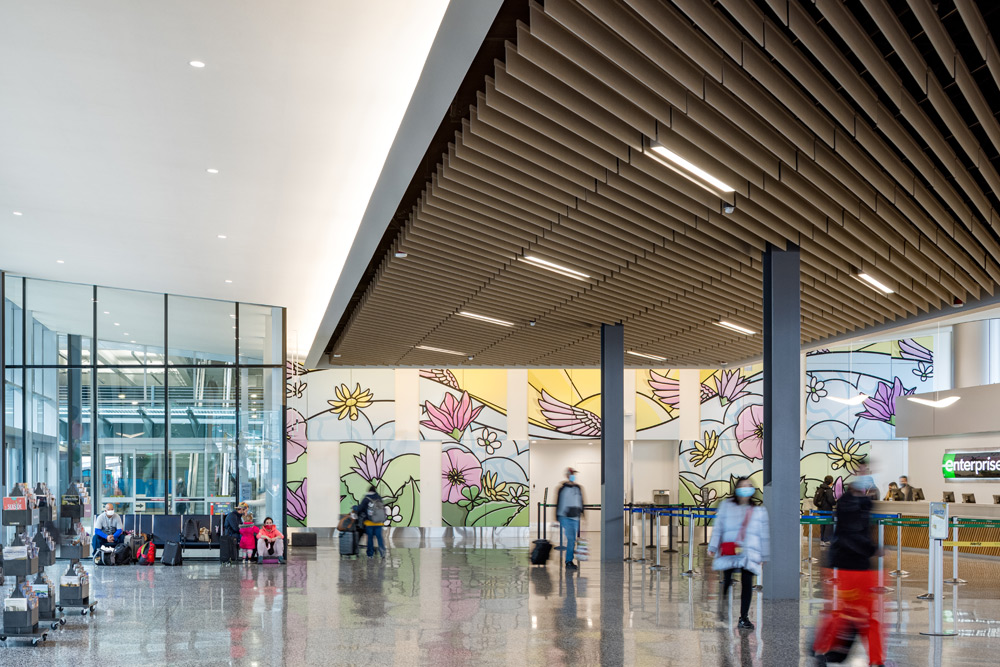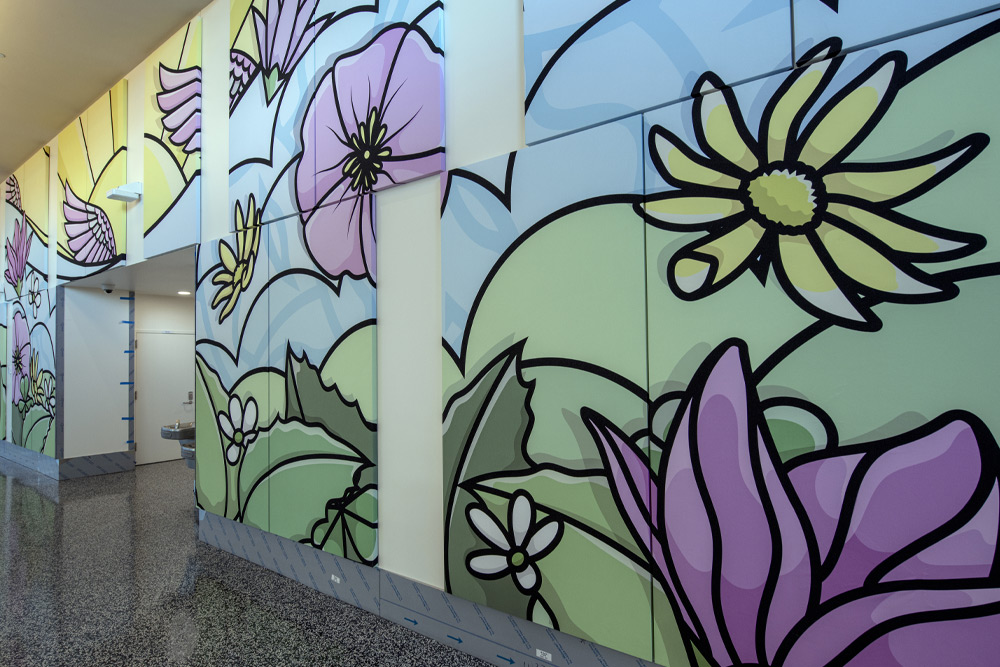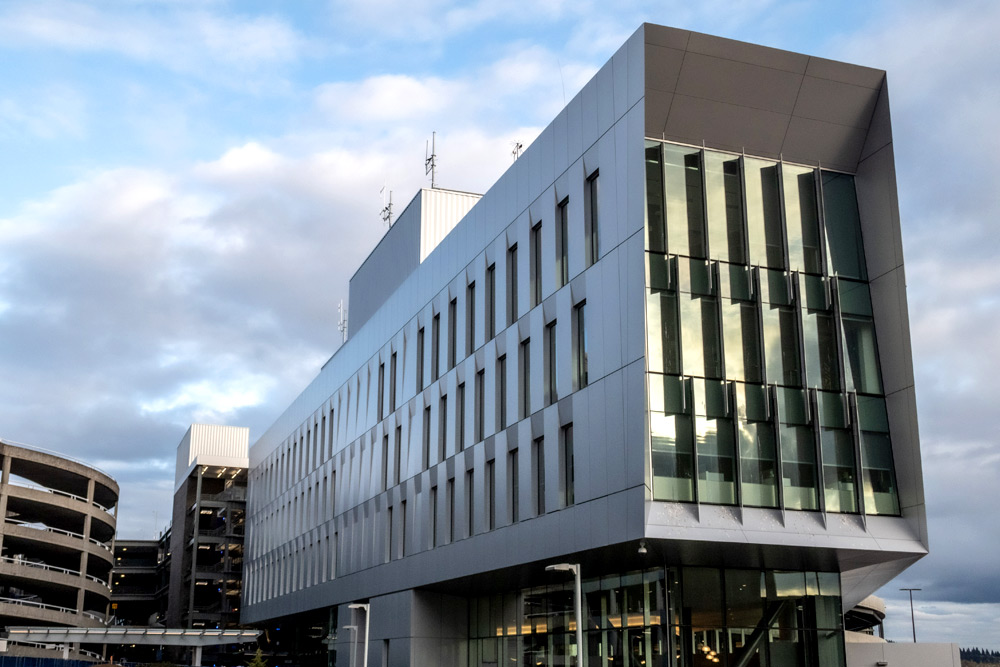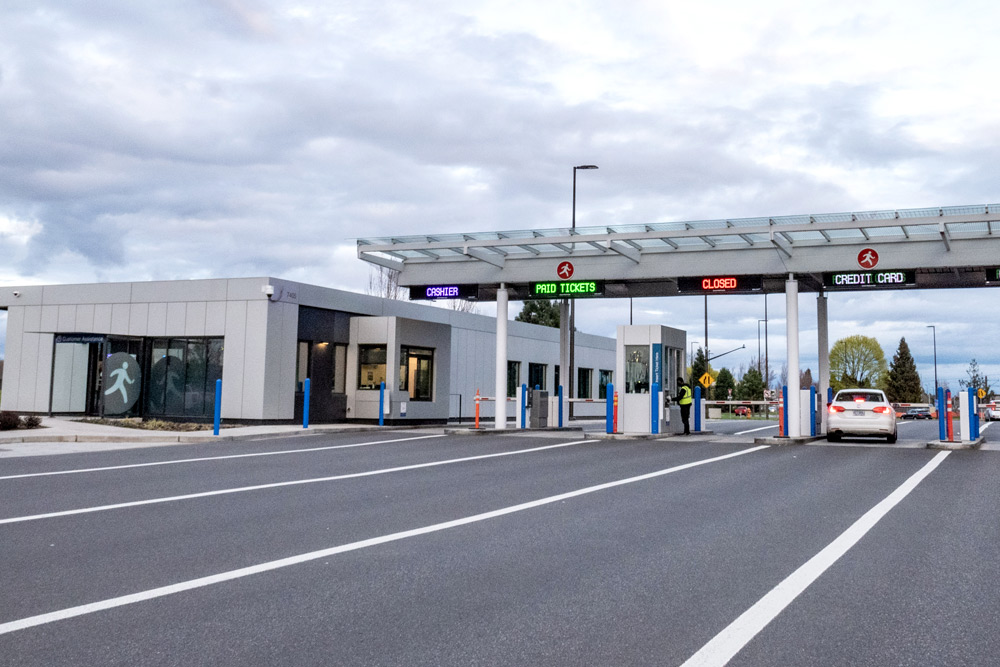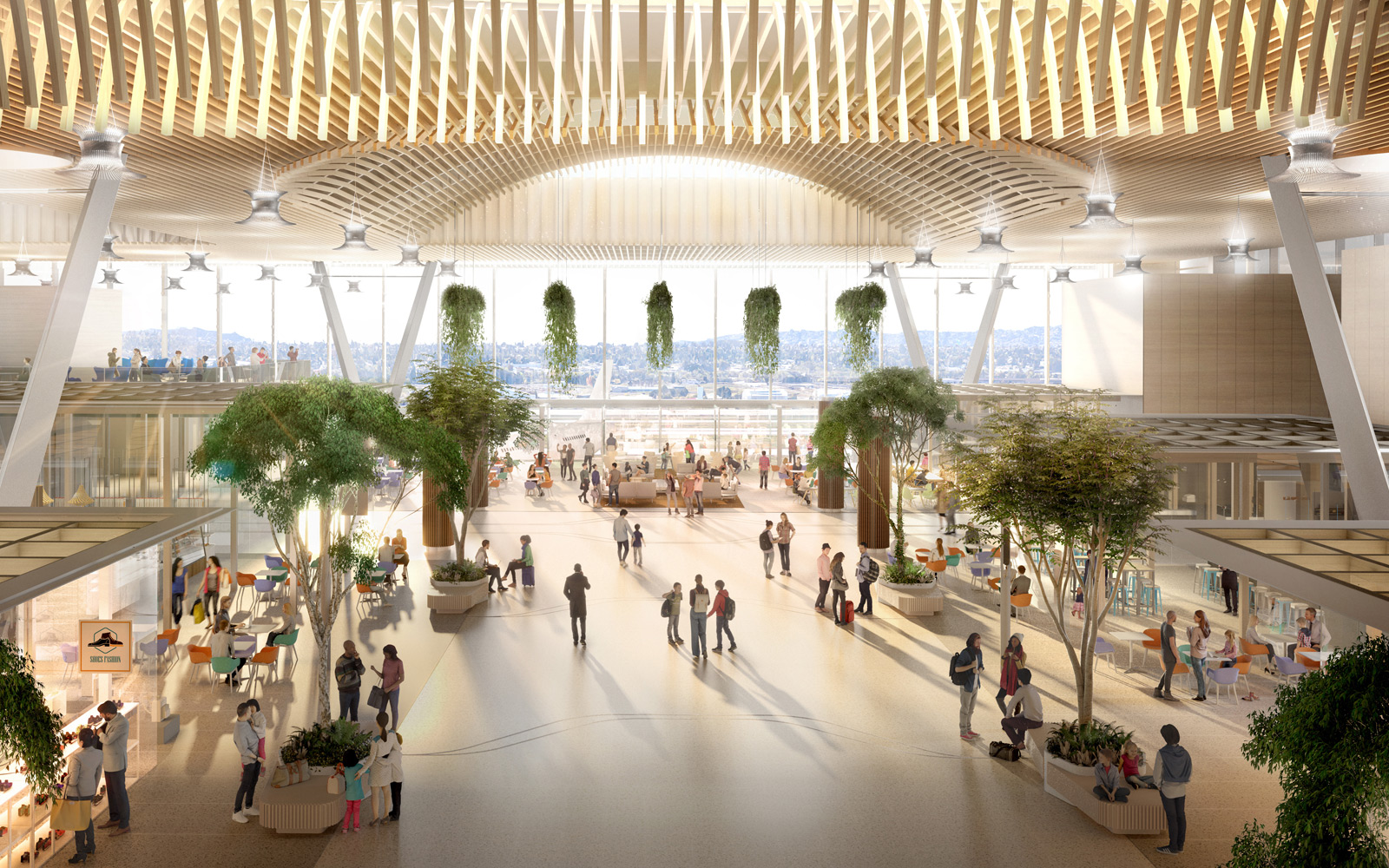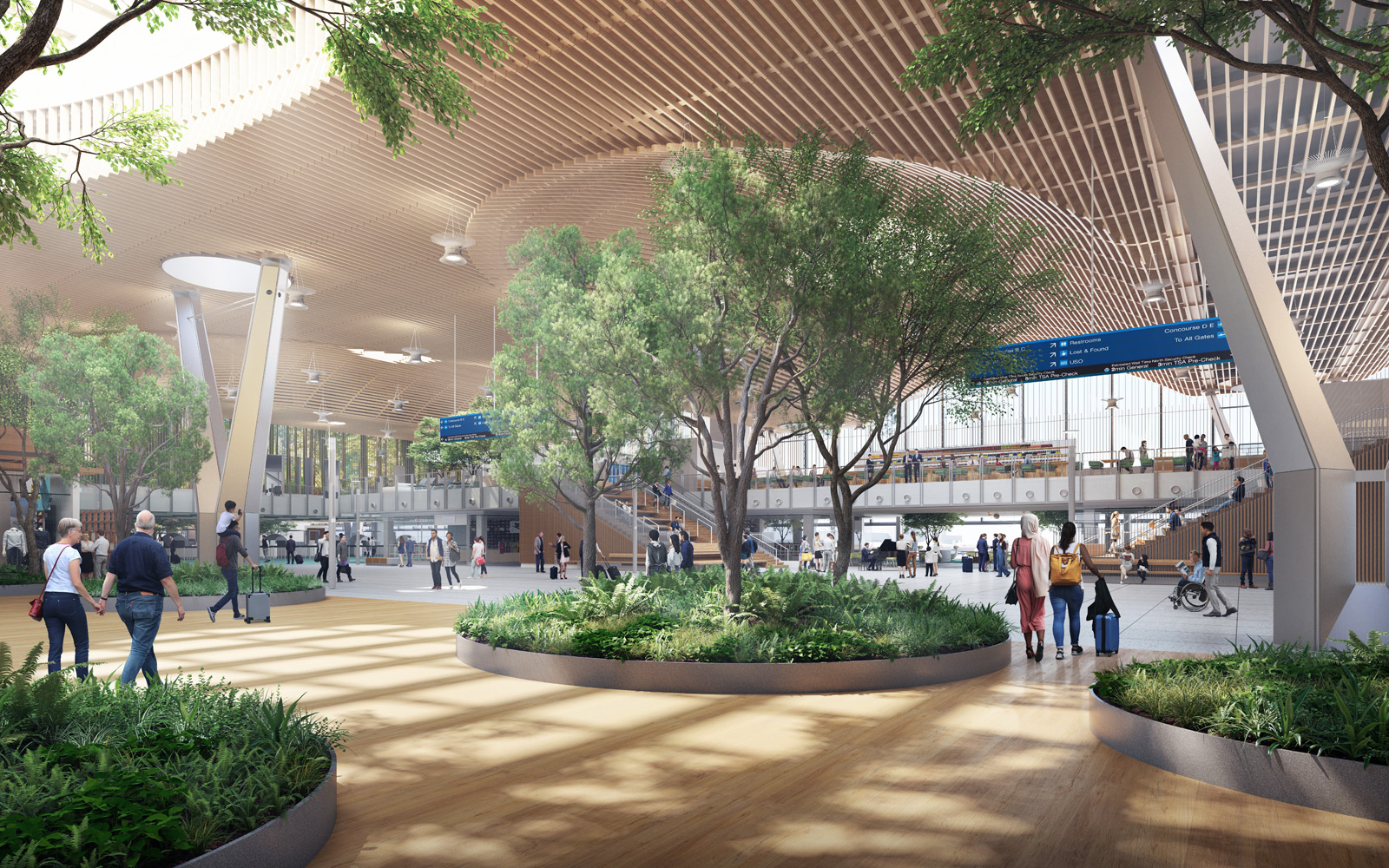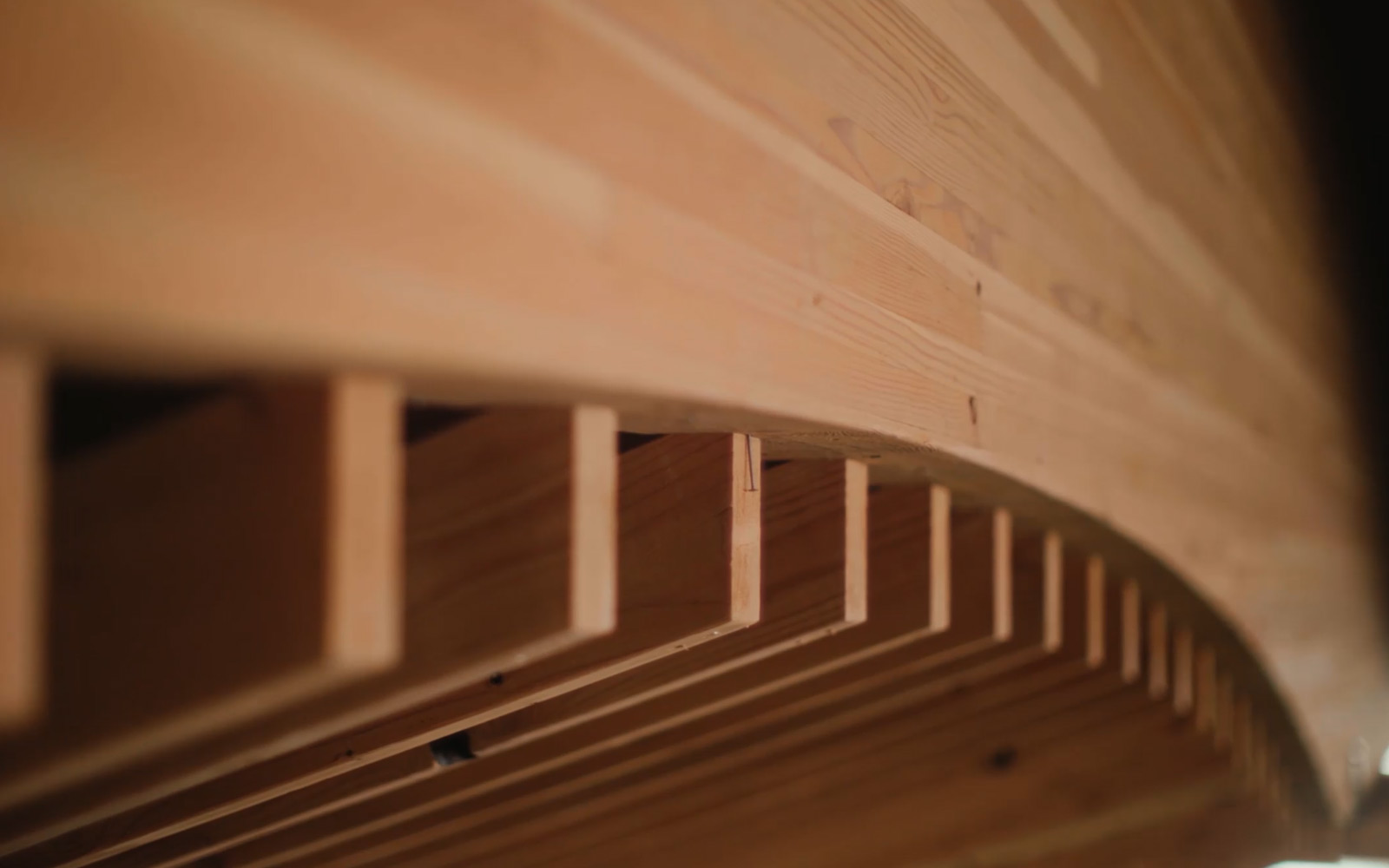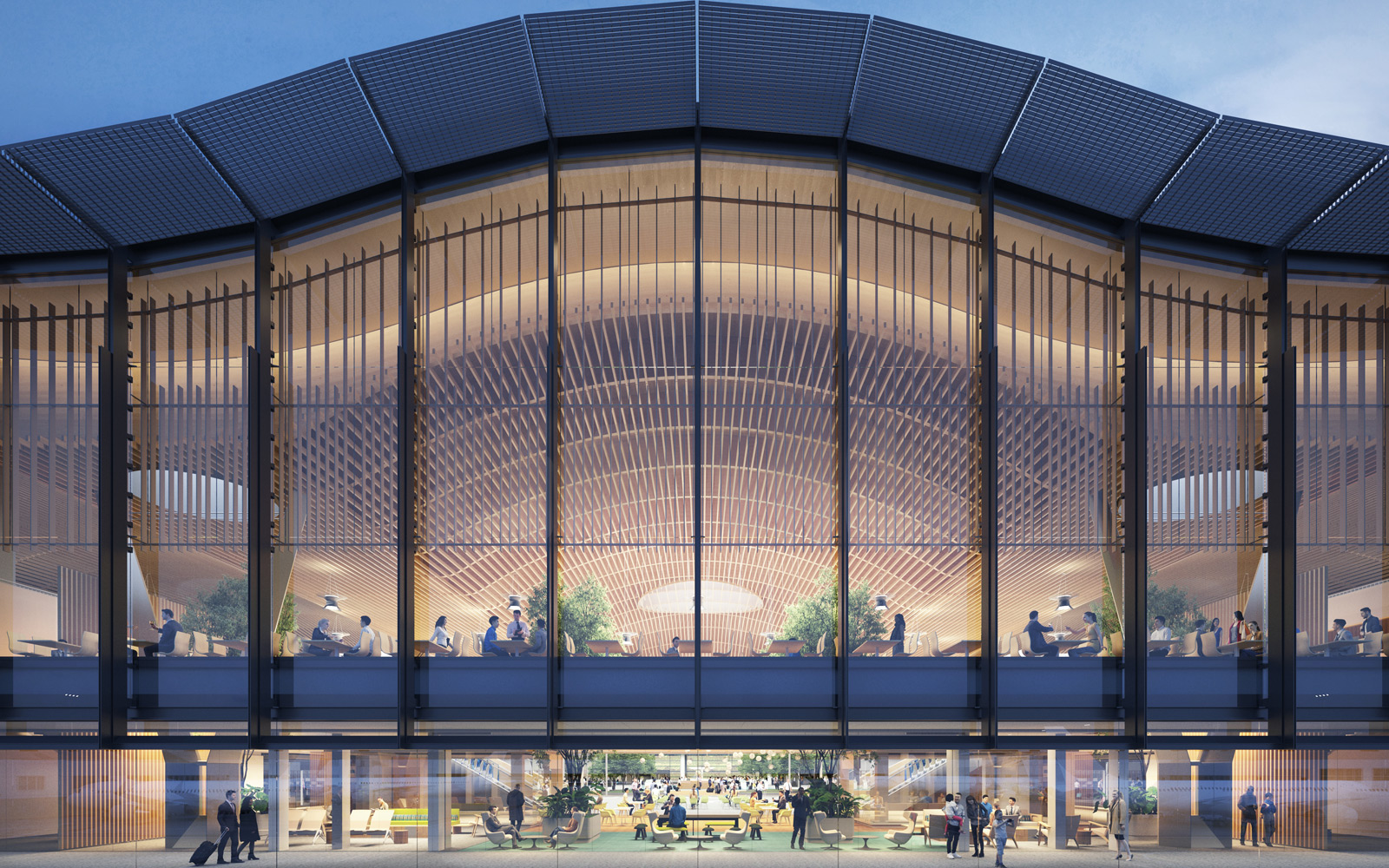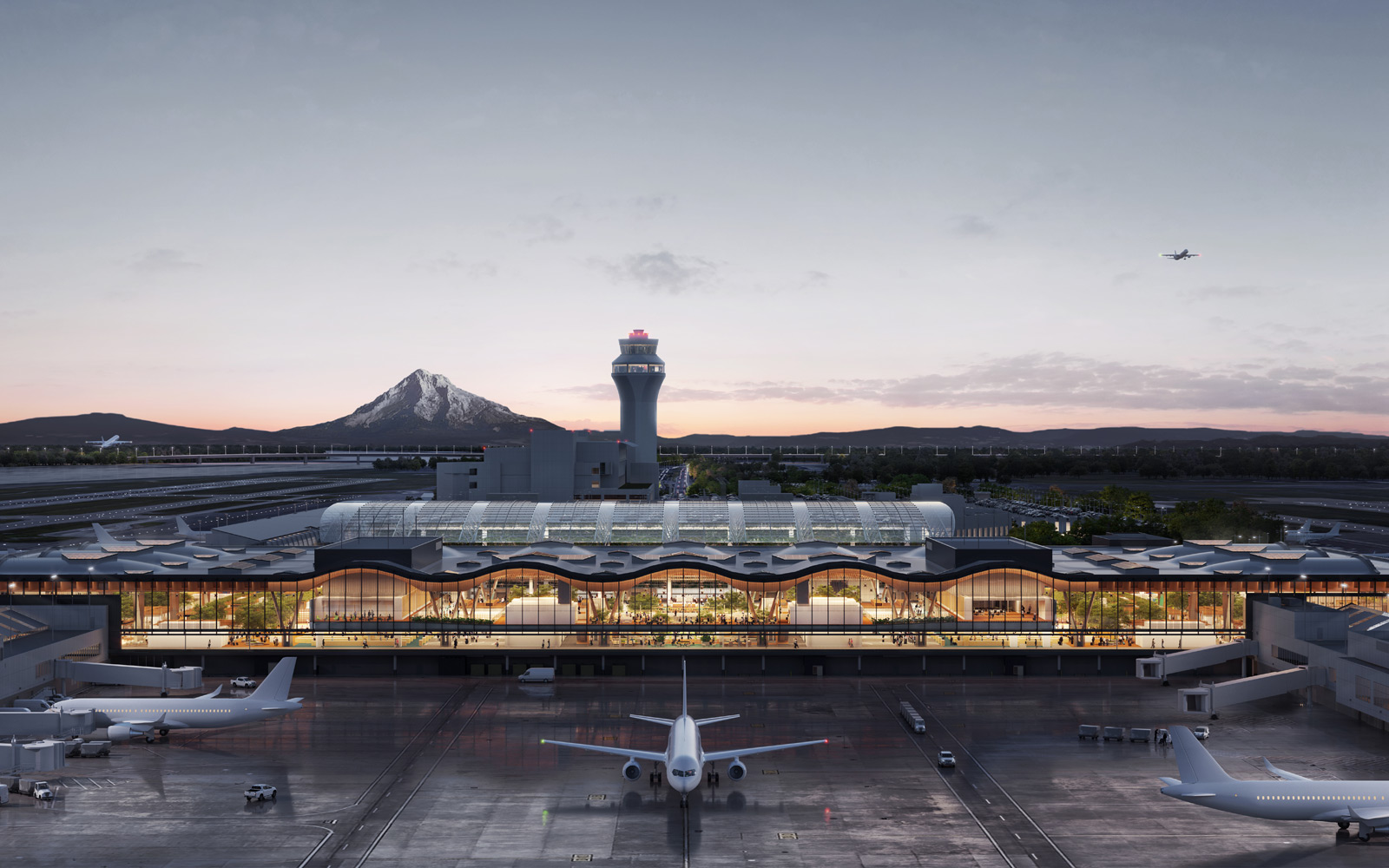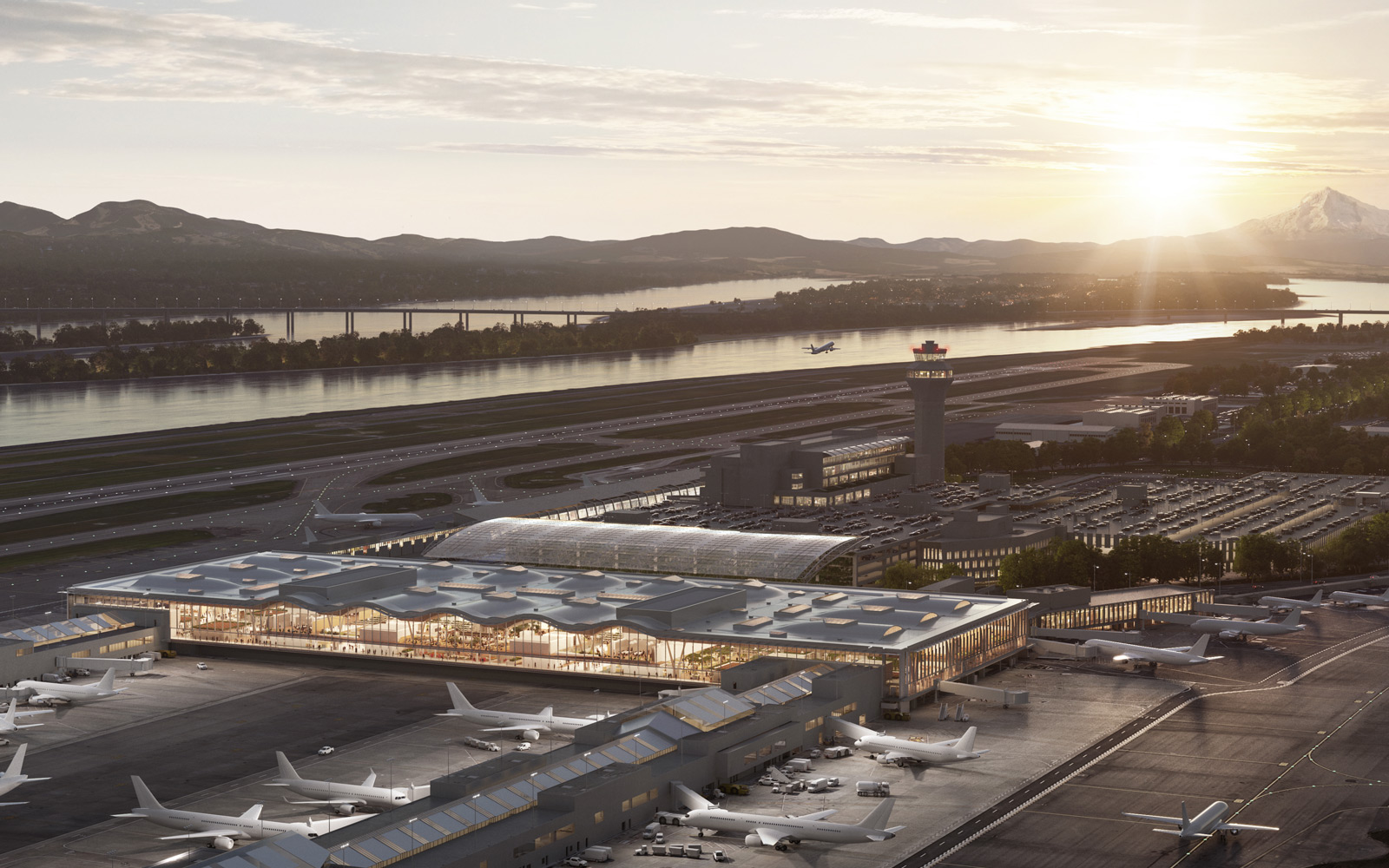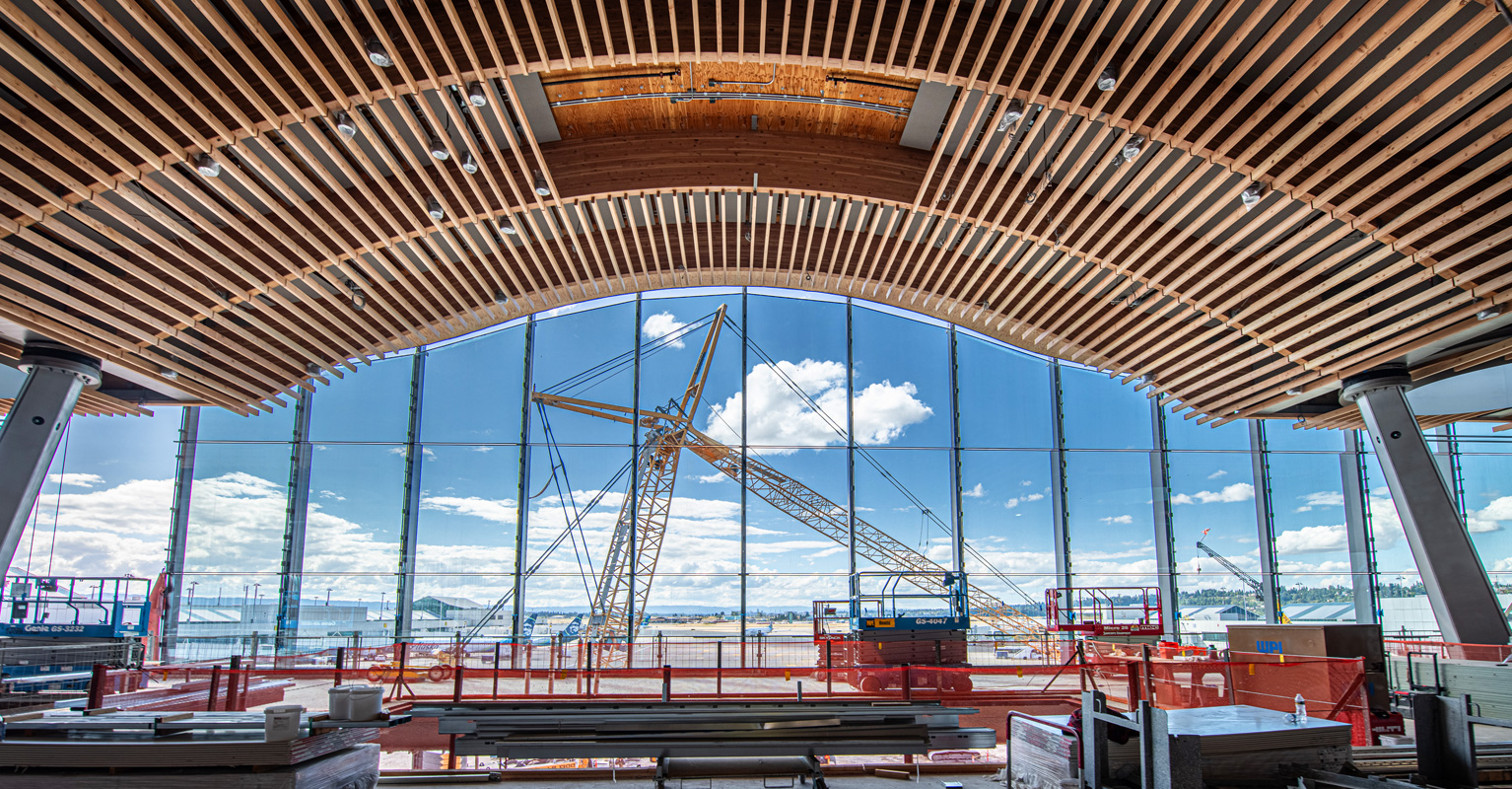
Quick update: This article was written in 2023. Want to read more about the new PDX?
You know what that last stretch before a deadline is like: You check and recheck your to-do list, crossing off completed tasks. With each item you draw a line through, the finish point gets a little closer. For us at PDX, August 2024 is one of those big deadlines: It's the month when you'll finally be able to walk into the new main terminal and see what we've been building.
Of course, August 2024 doesn't mean the end of the construction or the detours—we'll remove the last temporary walls by the end of 2026. However, we're well on our way to filling PDX with even more Pacific Northwest design, food, shops, and art.
Here are the seven biggest tasks on our to-do list:
 The main terminal’s western windows will let you look out over the airfield.
The main terminal’s western windows will let you look out over the airfield.
Task 1: Install the Exterior Windows
Timeframe: Now through November 2023
With the terminal roof in place, we have been wrapping the exterior in floor-to-ceiling windows, moving from the north end of the building to the south. Once we hang the last window pane, we'll be able to seal off the building to control the climate inside. Keep an eye out for great views!
Task 2: Peel away the old ceiling
Timeframe: Now through December 2023
This summer and fall, we're removing a 30-foot-wide stretch of ceiling over the ticketing lobby to expose the new roof above it. You may encounter extra scaffolding and noise this summer, and you'll want to pay attention to lobby signs that guide you to your airline’s ticket counter. That said, if you have a few extra minutes before your flight, head to the north end of the ticket lobby and look up—you’ll get a sneak peek at the terminal's new wood-lattice ceiling.
 Terrazzo and Oregon white oak will cover high-traffic areas at PDX.
Terrazzo and Oregon white oak will cover high-traffic areas at PDX.
Task 3: Install new floors
Timeframe: Winter 2023 through Spring 2024
Now that we've poured concrete for the building's three floors, we can make them beautiful. This summer, we'll start installing terrazzo. Then, once the building's exterior walls are sealed, we'll lay down white oak flooring (from the Eola Hills in the Willamette Valley) in some spots and Portland's best loved carpet in others.
Task 4: Plant trees
Timeframe: Spring and Summer 2024
If you've taken our virtual tour of the new main terminal, you've noticed the western half of the building is filled with tall, leafy trees. They’ve been growing in a climate-controlled location for the past few years, and this winter they'll move indoors. Our goal: to make you feel like you've brought the Pacific Northwest forest into the terminal with you.
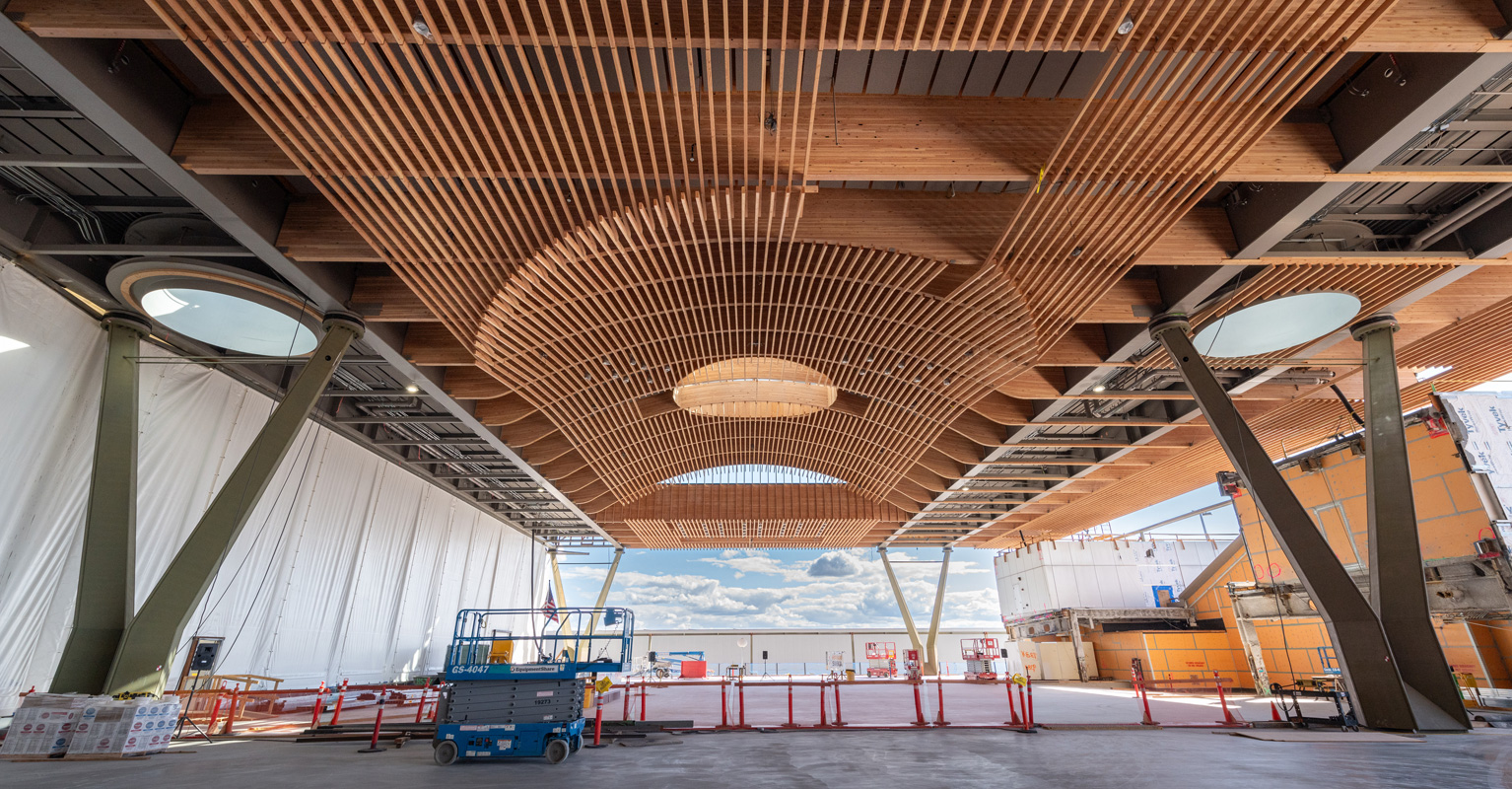
Oven & Shaker, KURE Superfoods, Columbia Sportswear, and four other local shops will open in the south market hall.
Task 5: Build new shops and restaurants
Timeframe: January through the end of 2024
This spring, we announced the 20 new shops and restaurants that will open in the new main terminal over the next two years. Early next year, the first group of businesses will receive the keys to PDX so they can build out their spaces. Later in 2024 you'll start seeing—and tasting—the results of their efforts.
Task 6: Improve the security flow
Timeframe: Winter 2023 through Summer 2024
We're proud of how smoothly PDX's security checks run, but we've been plotting ways to make them even more stress-free. The new security checkpoints we’re building will have more screening lanes, monitors showing wait times, and other technology to speed visitors through.
Task 7: Install new art
Timeframe: Spring 2024
The new terminal isn't just going to surround visitors with greenery and windows. Working with the Regional Arts and Culture Council, PDX is creating space for up to twenty permanent art installations, four of which will debut in May 2024. We're thrilled we can announce two of the artists creating work for the airport: Portland’s amazing Yoonhee Choi and the nationally renowned Sanford Biggers.
Want to track our progress as we check all these improvements off our to-do list? Follow us on Facebook and Instagram for photos and updates, and sign up for our (spam-free) email newsletter.
